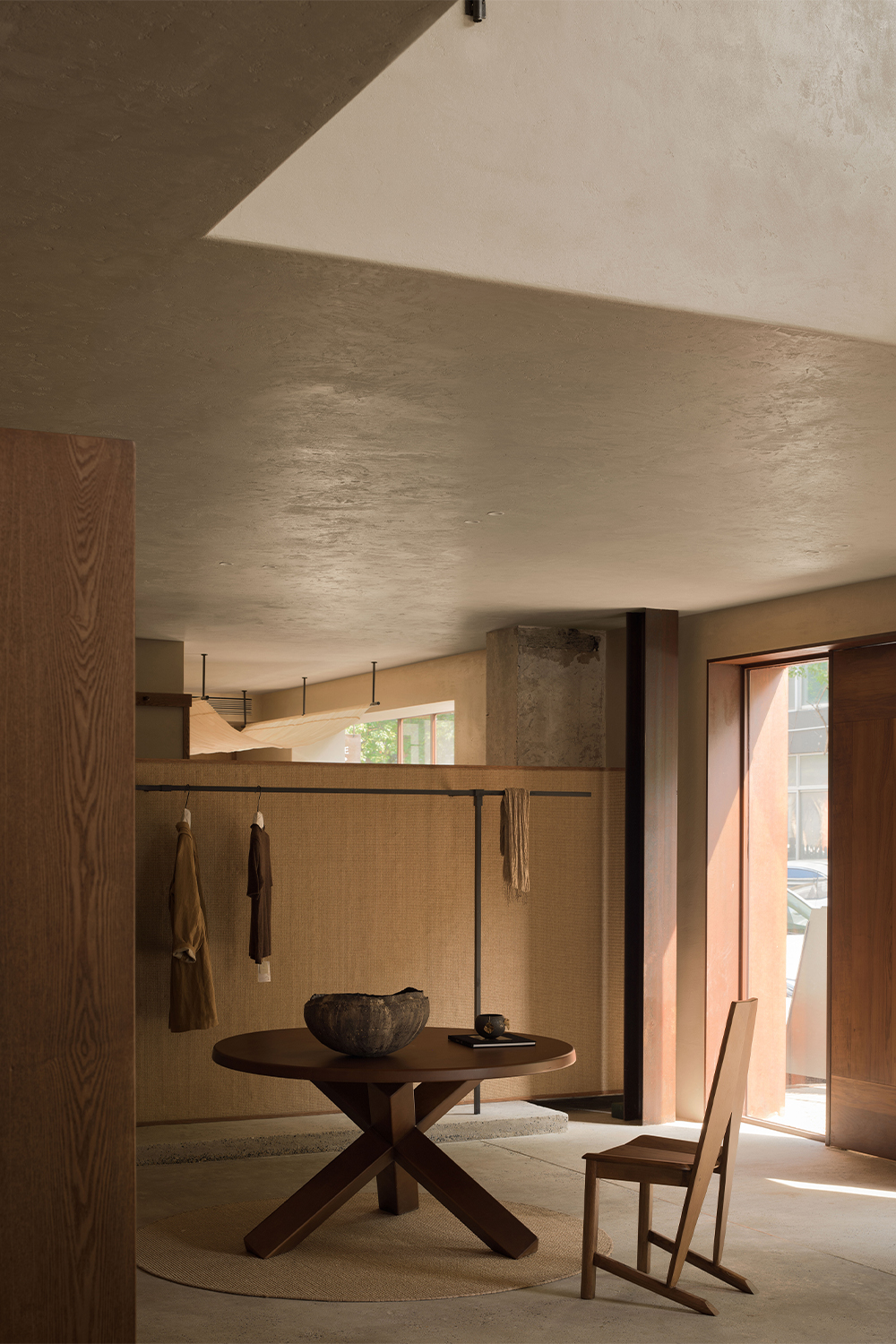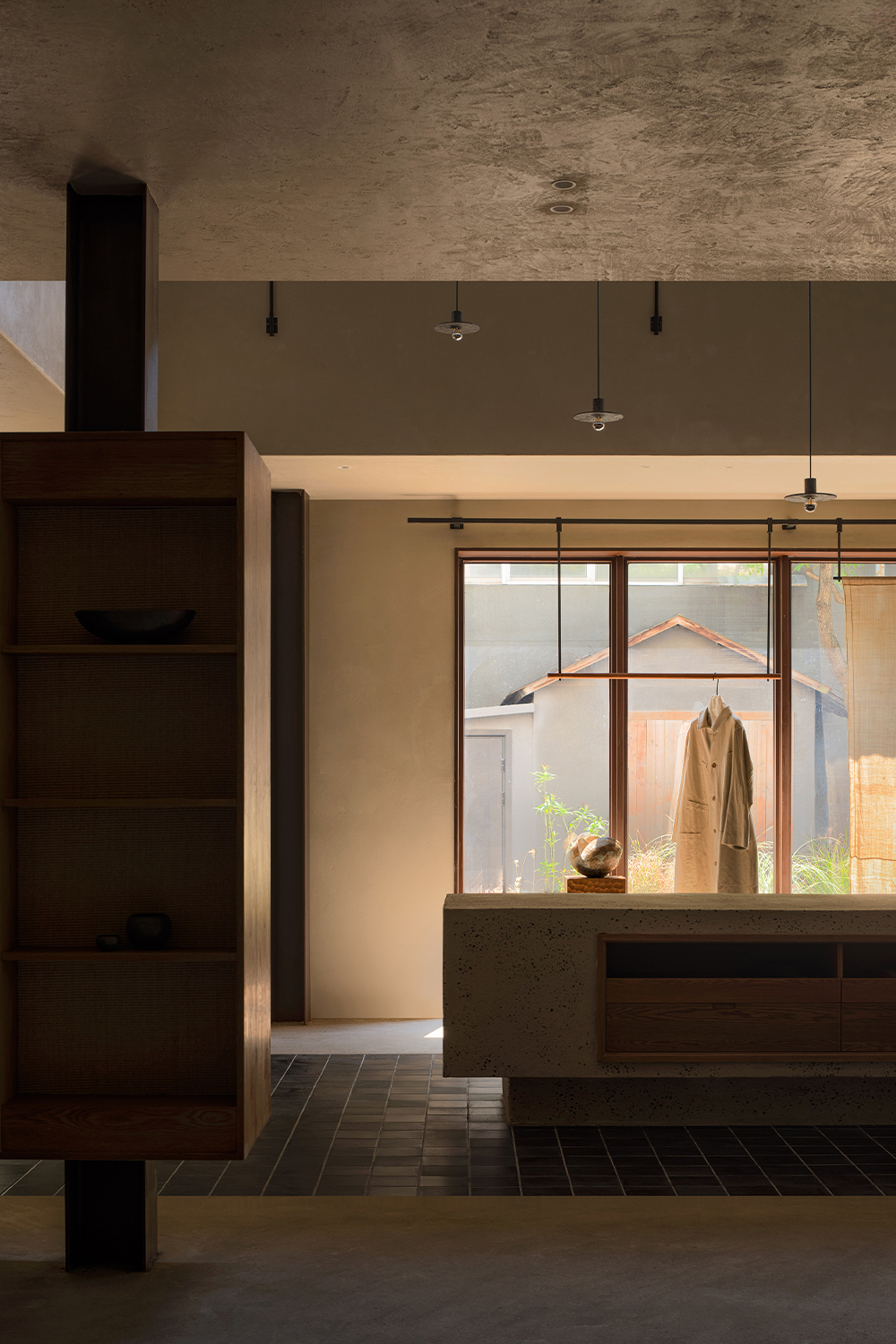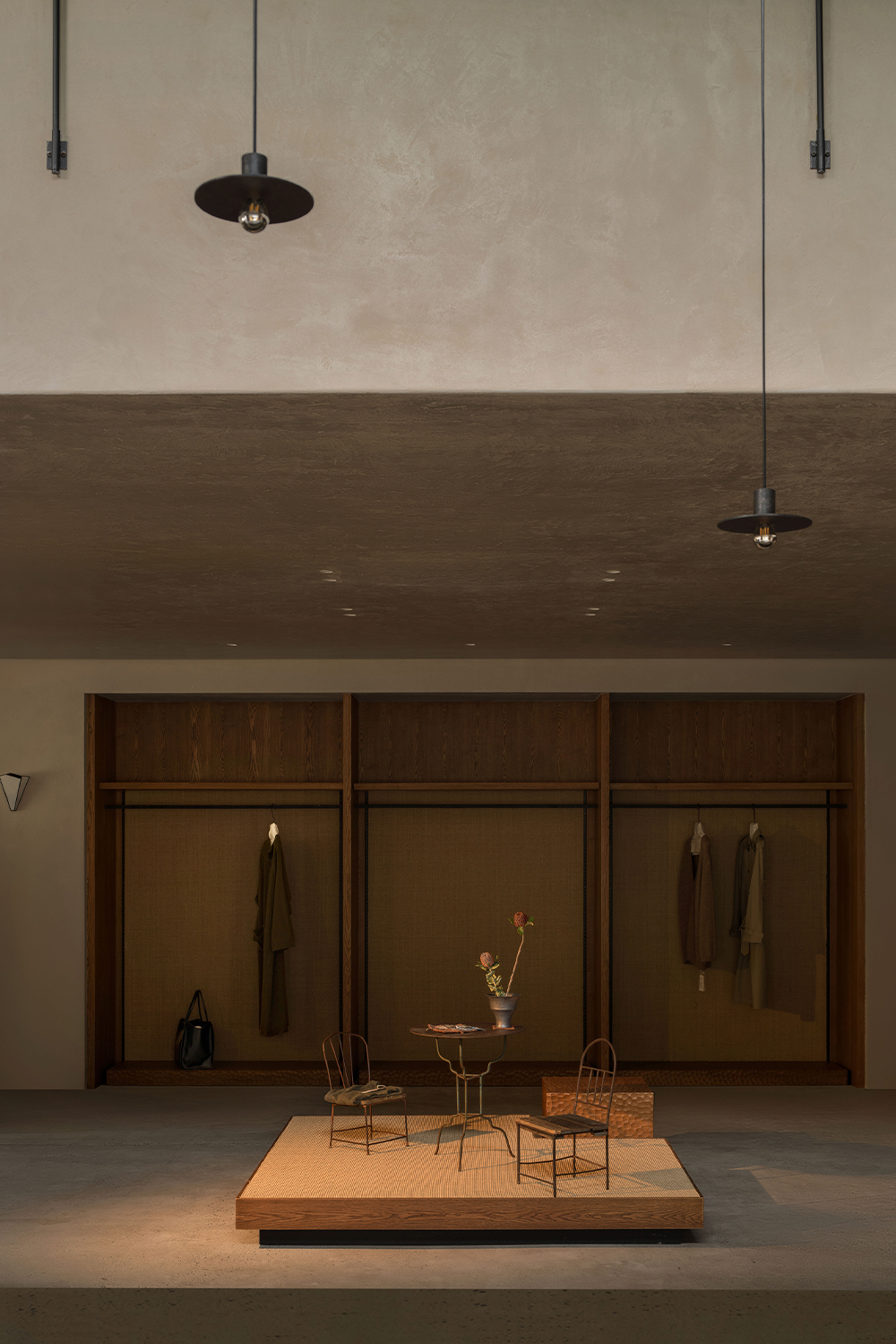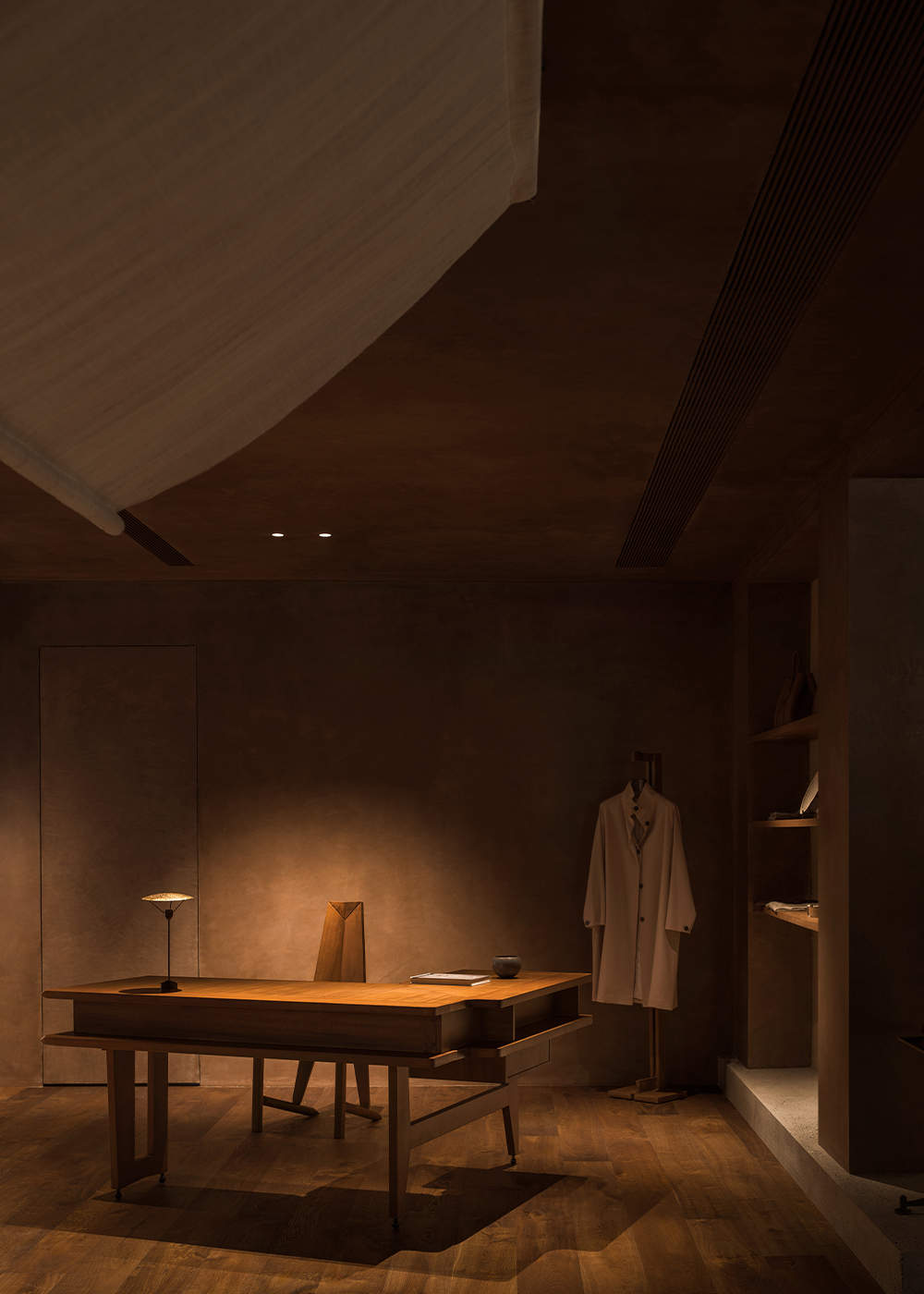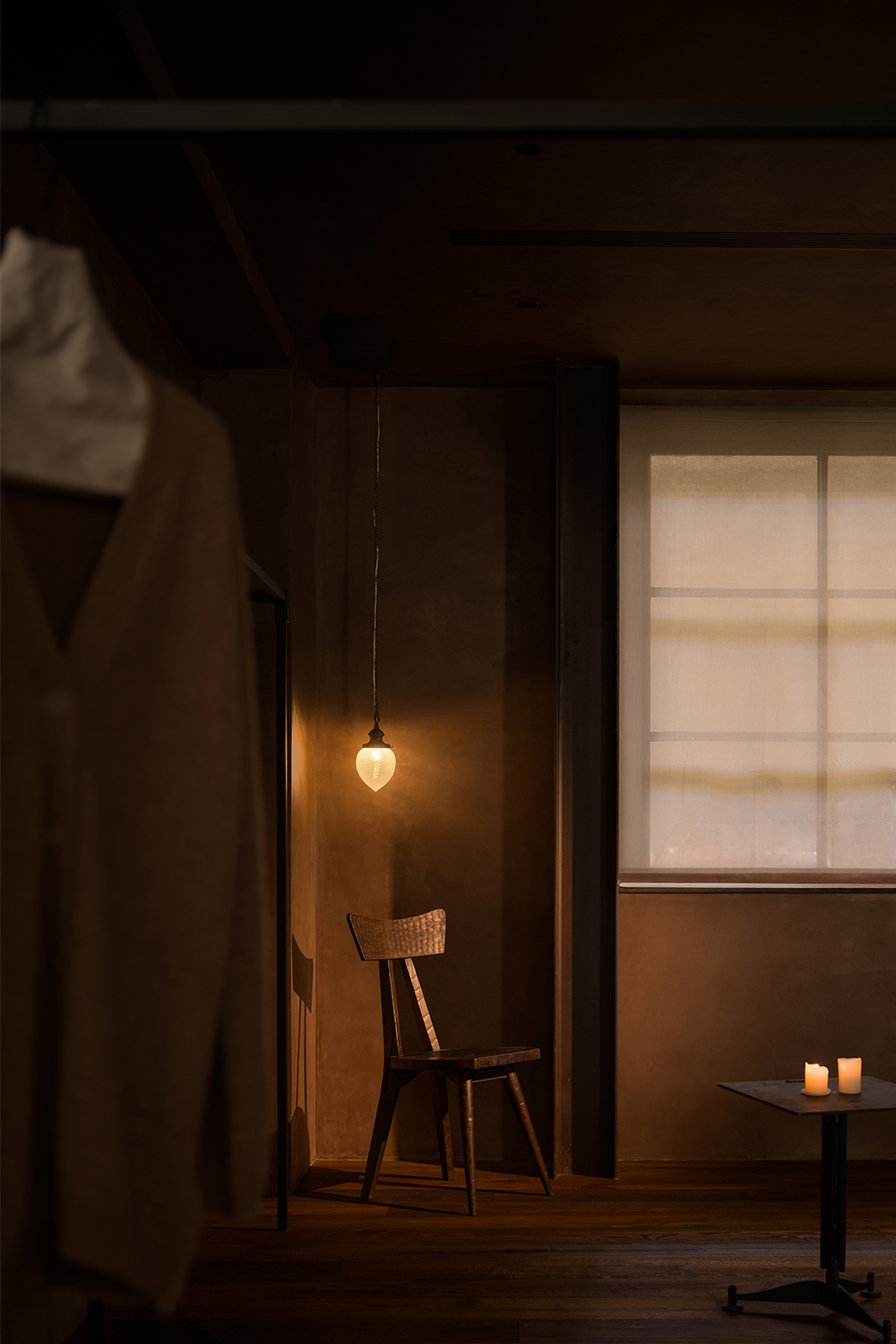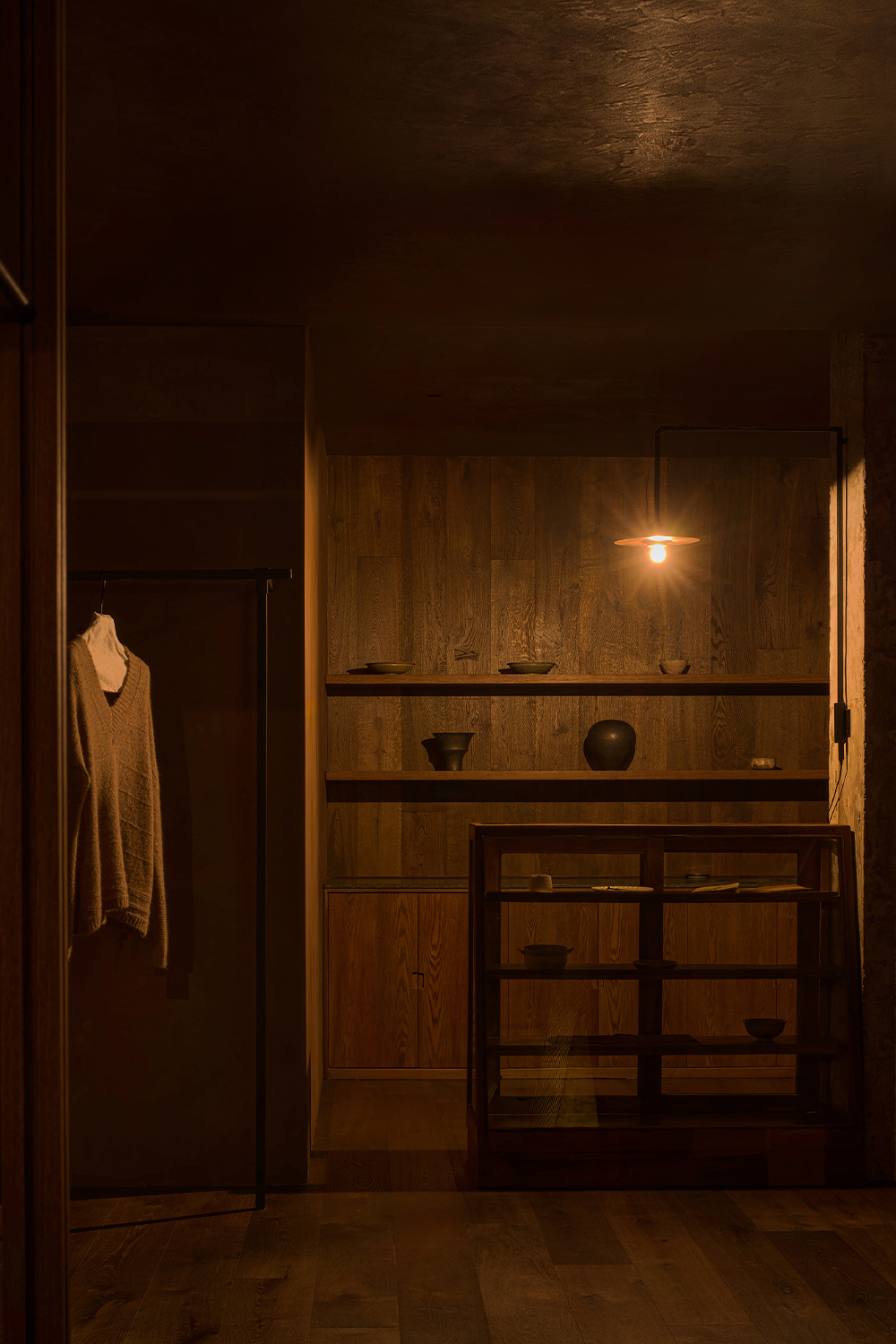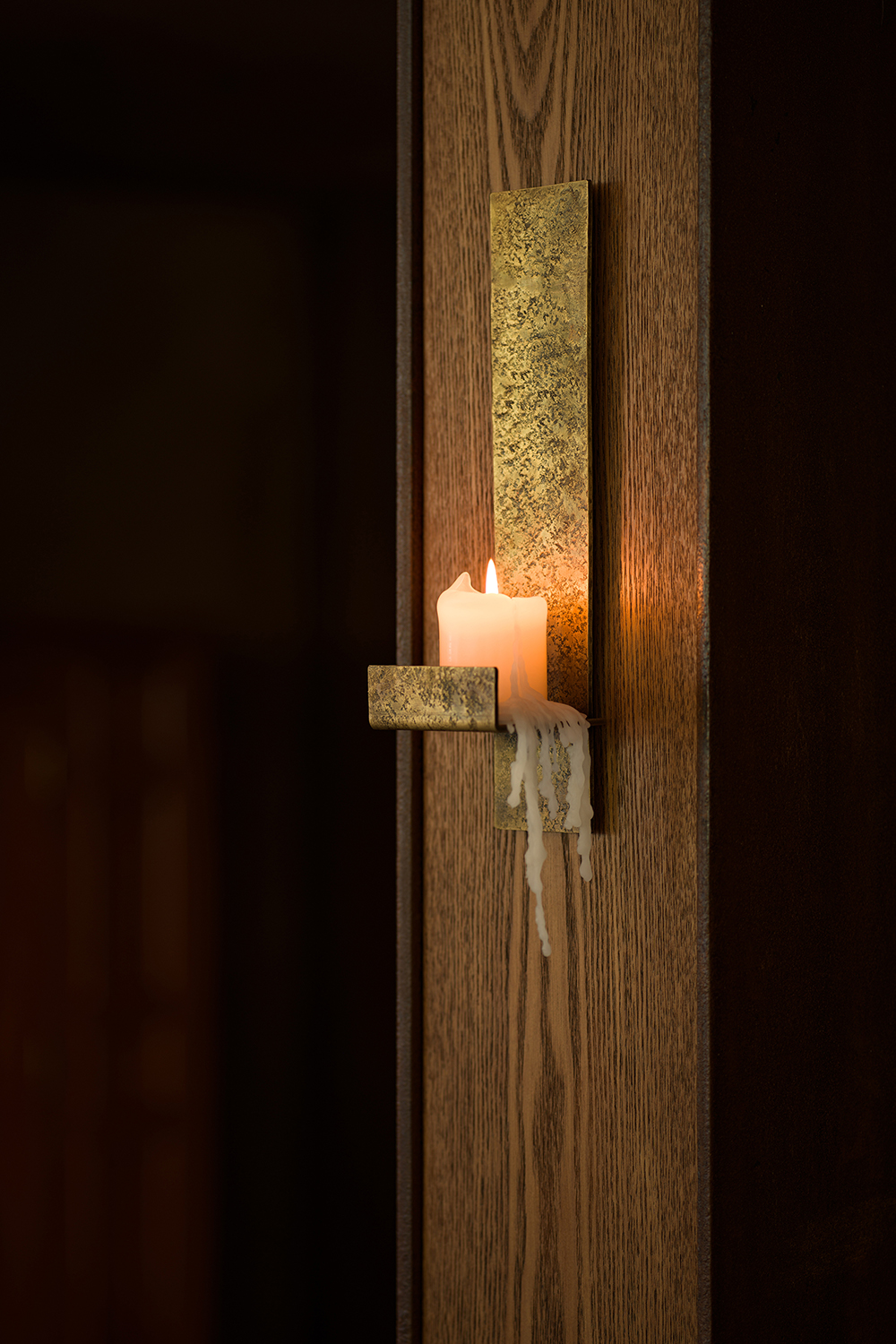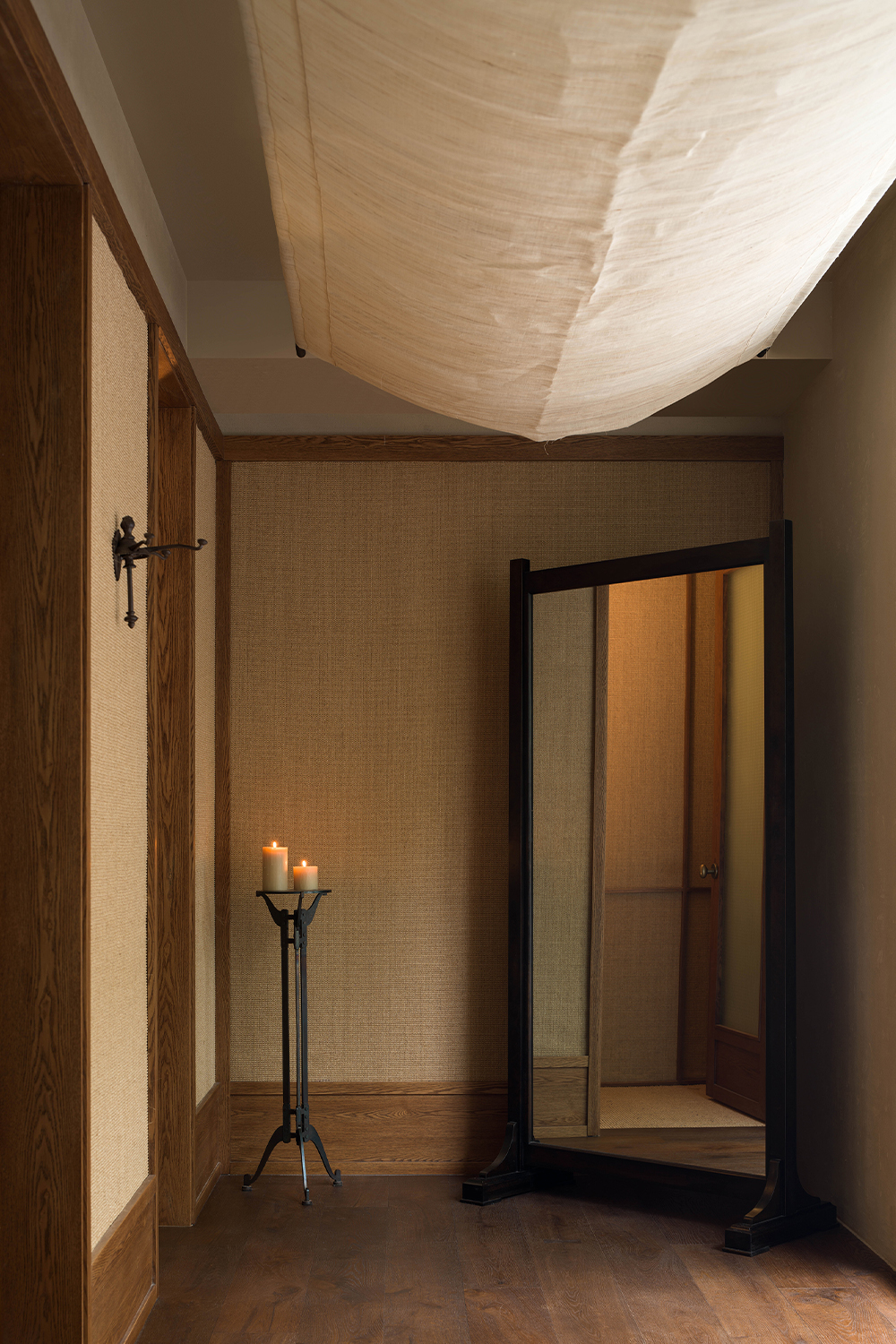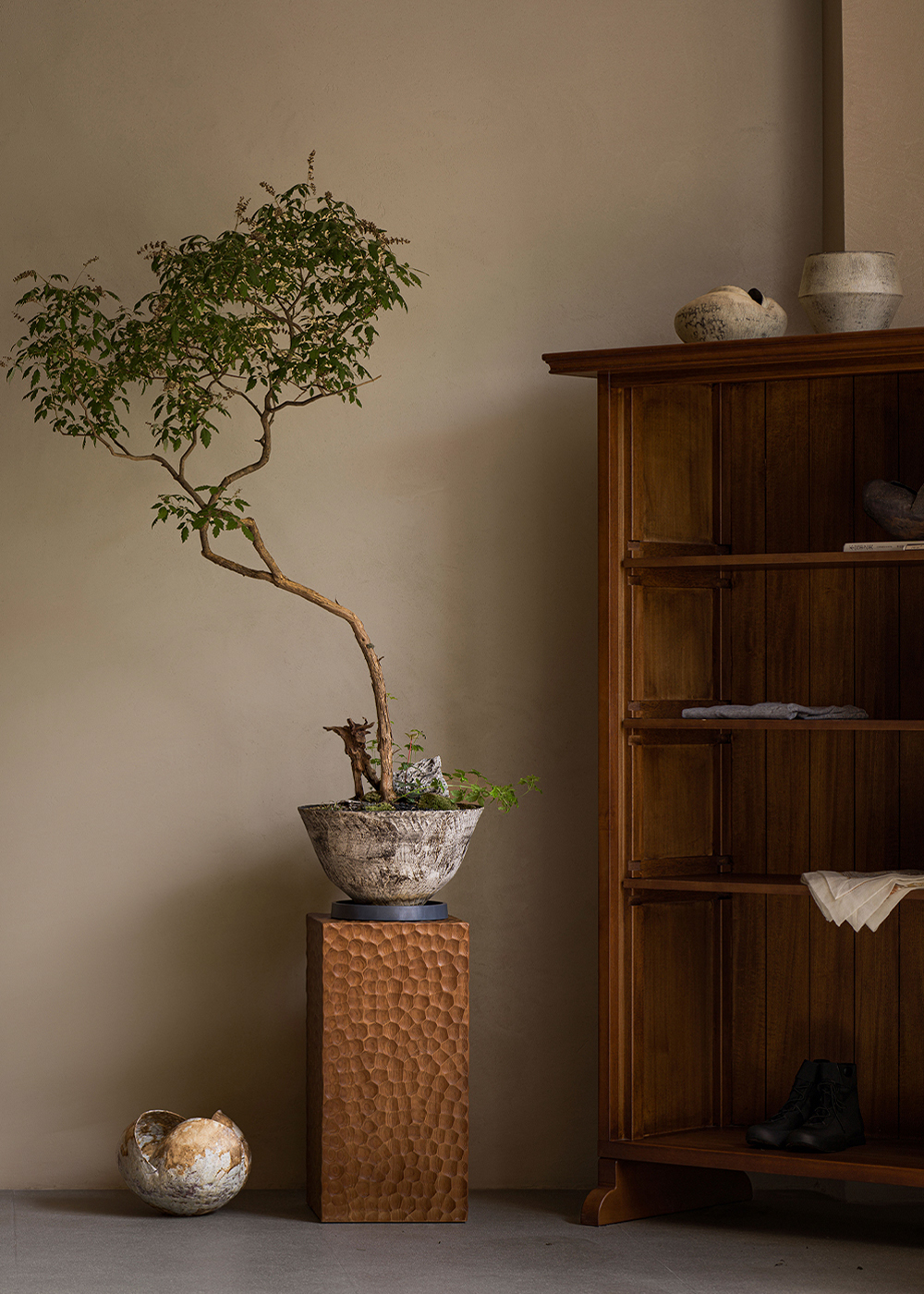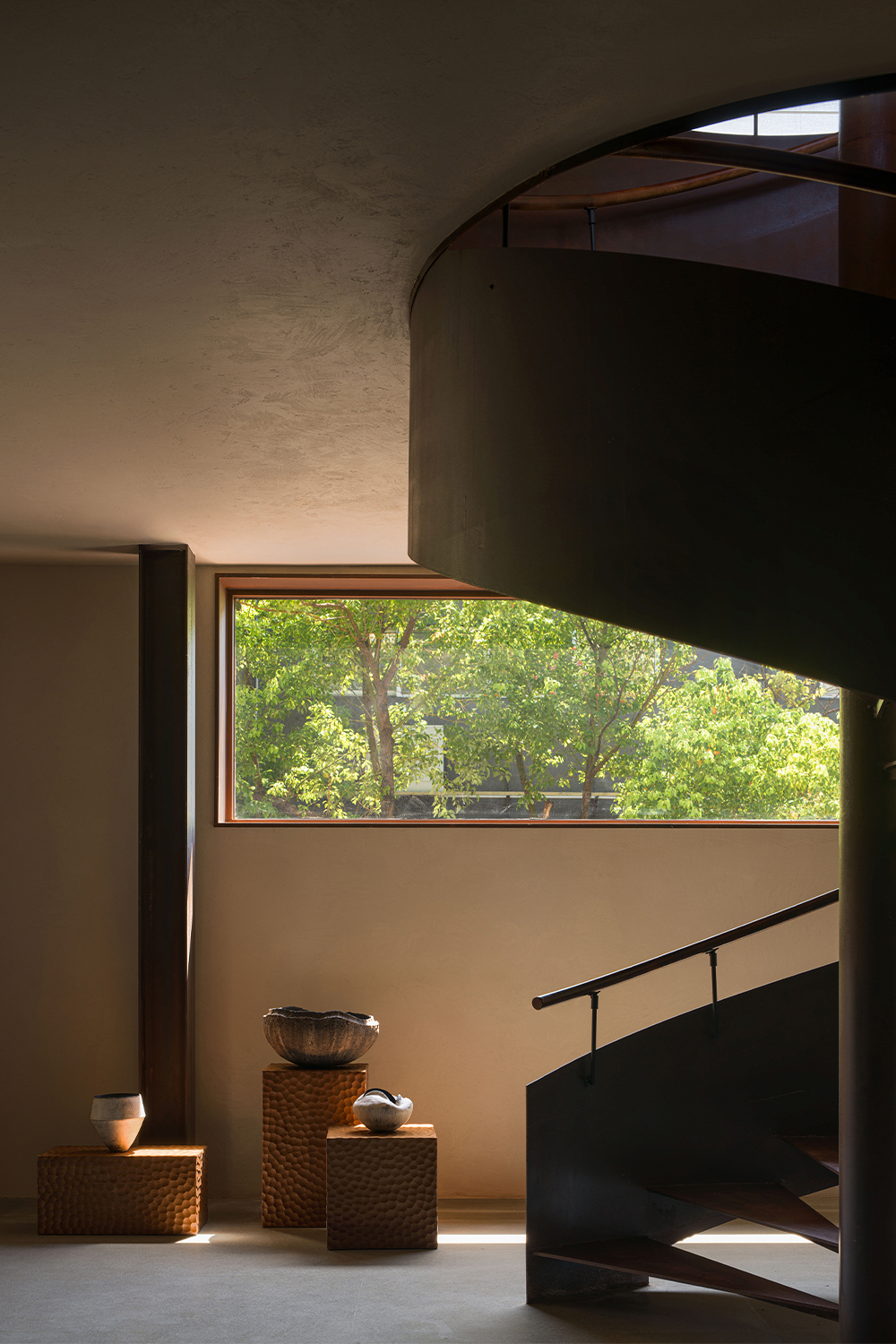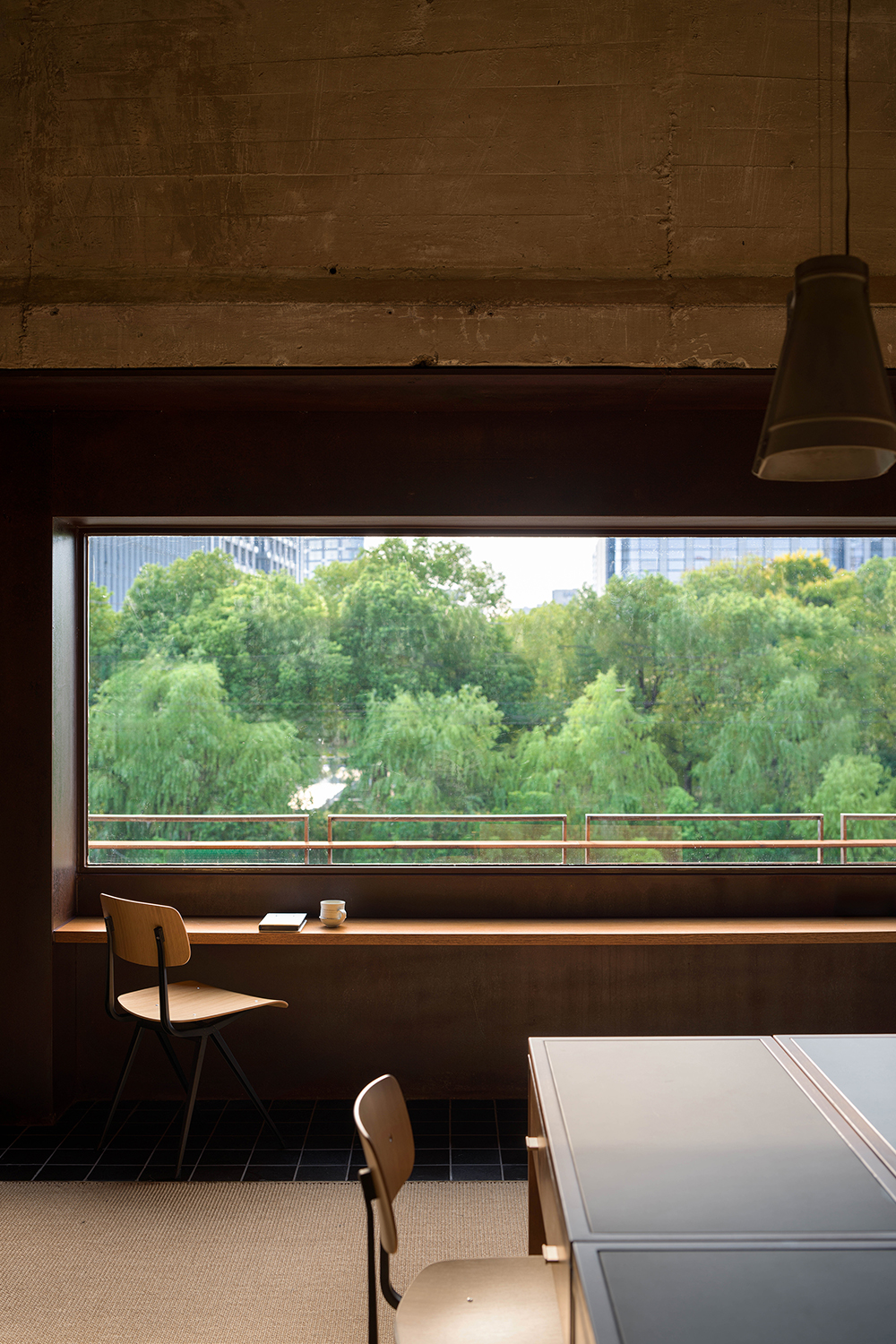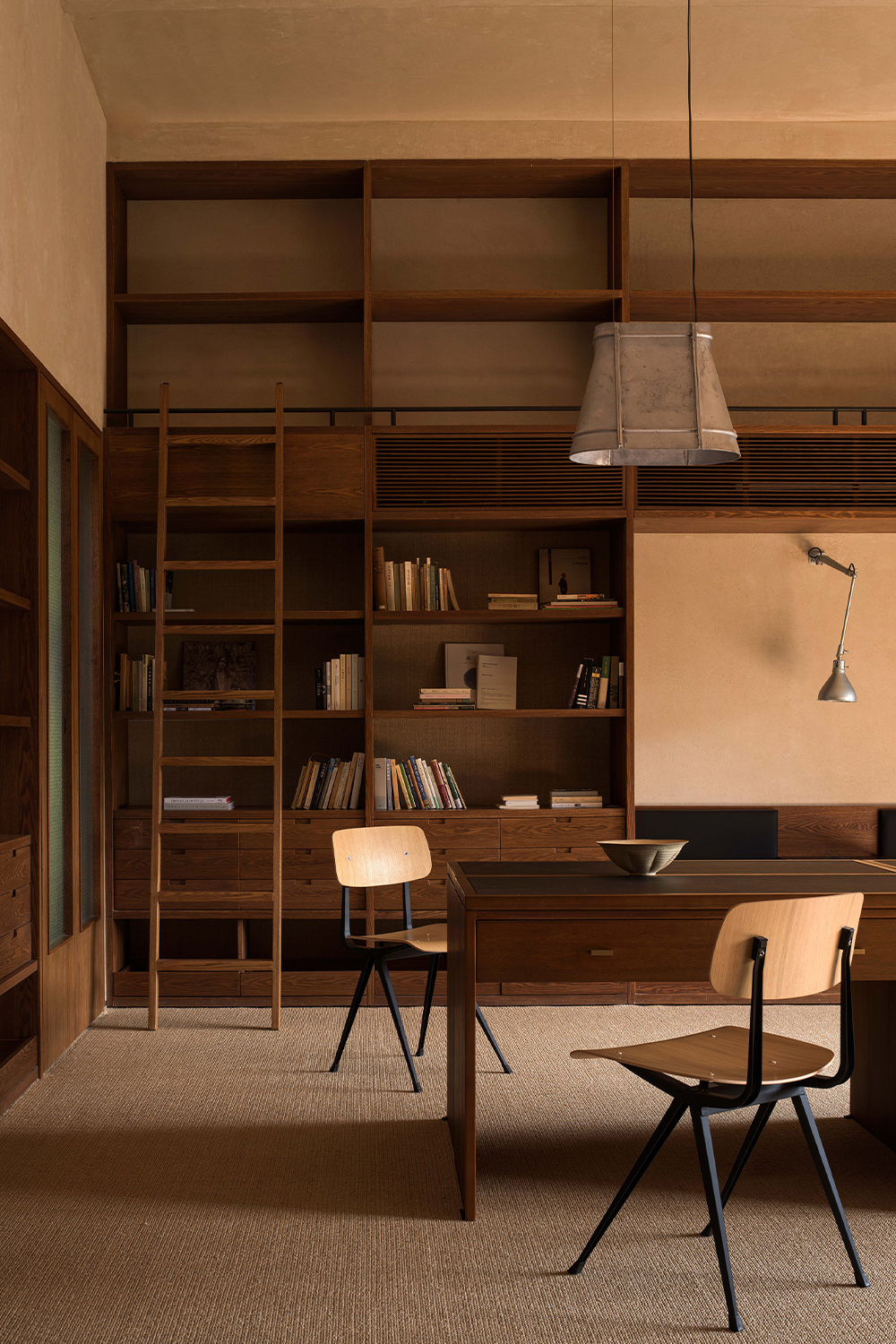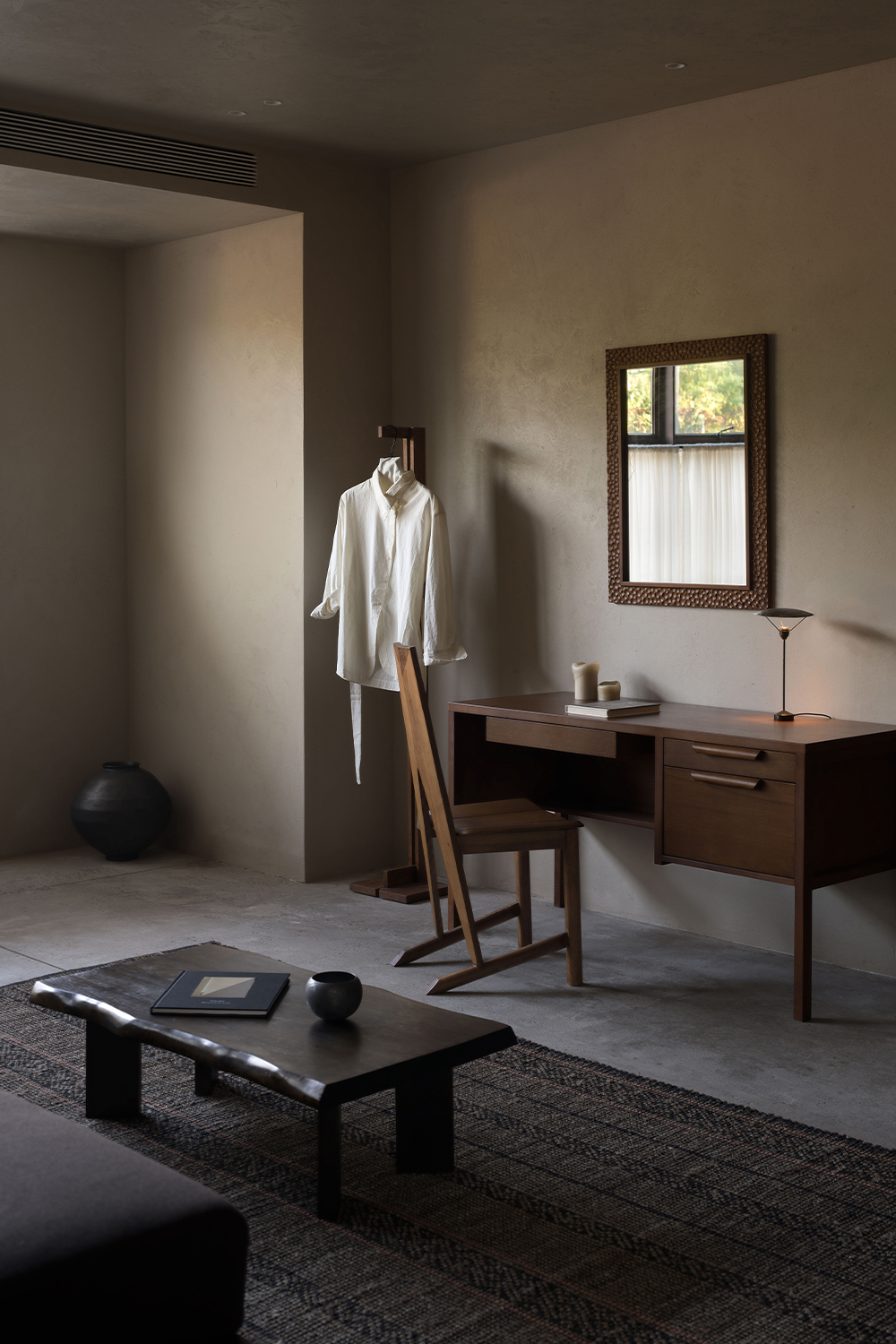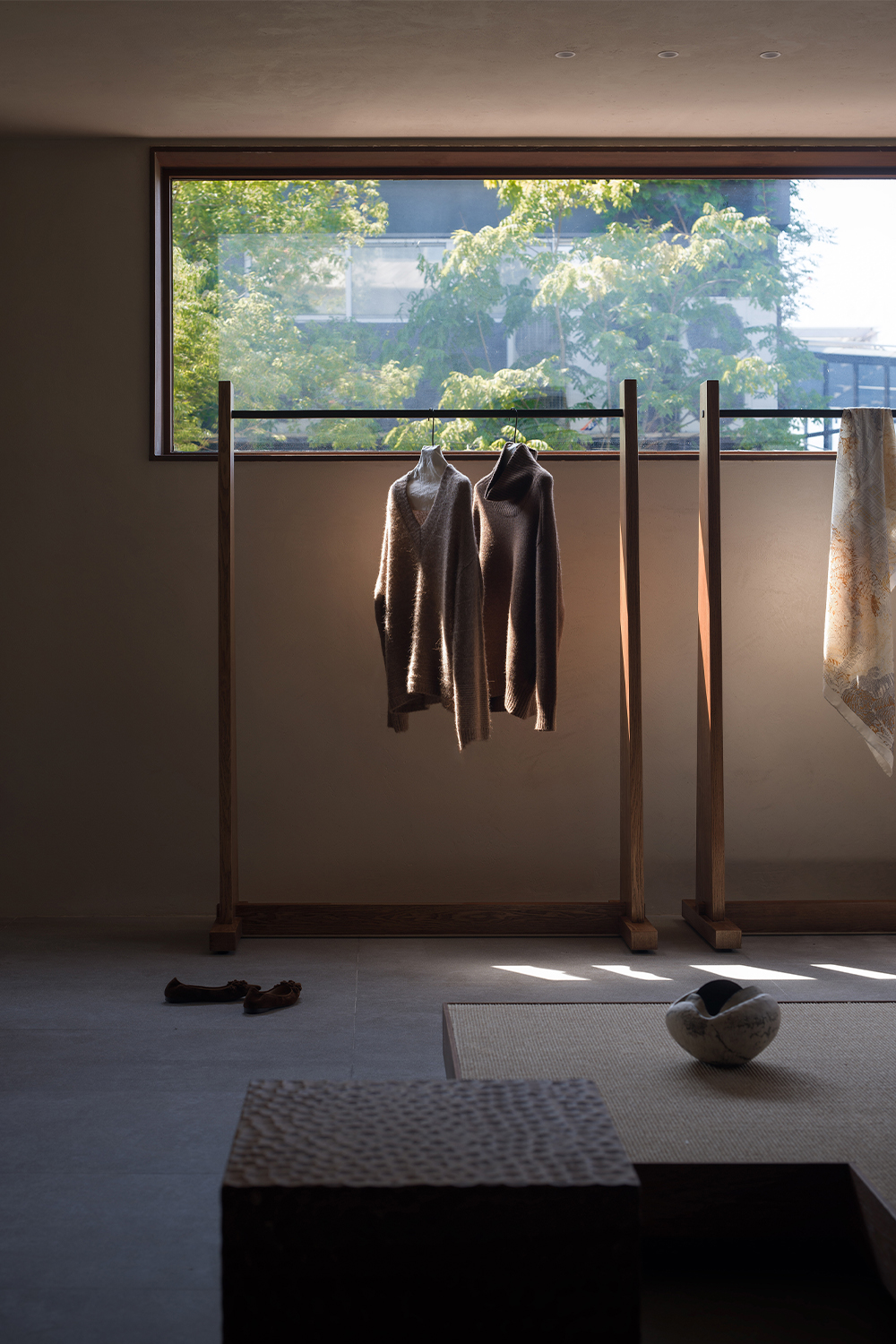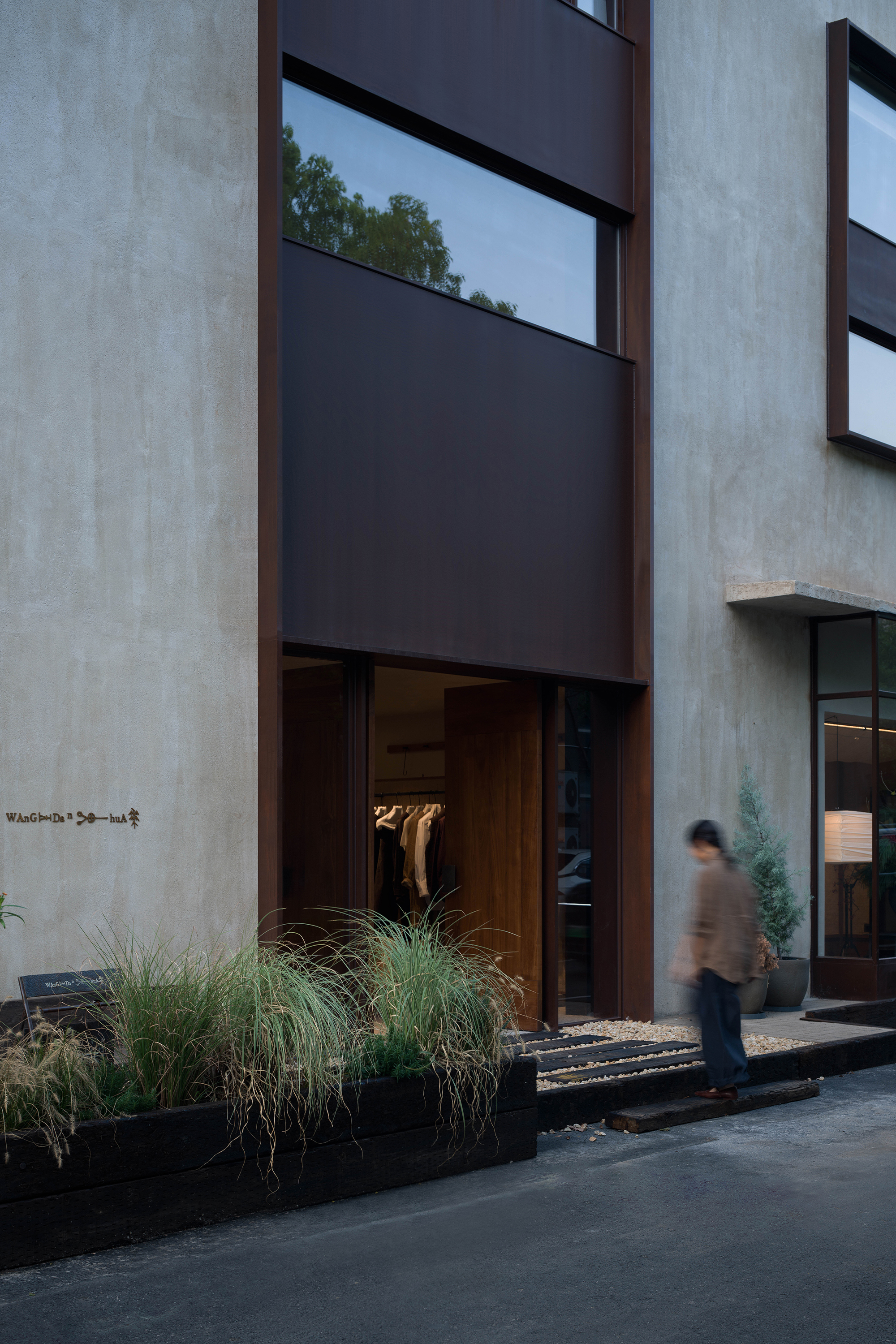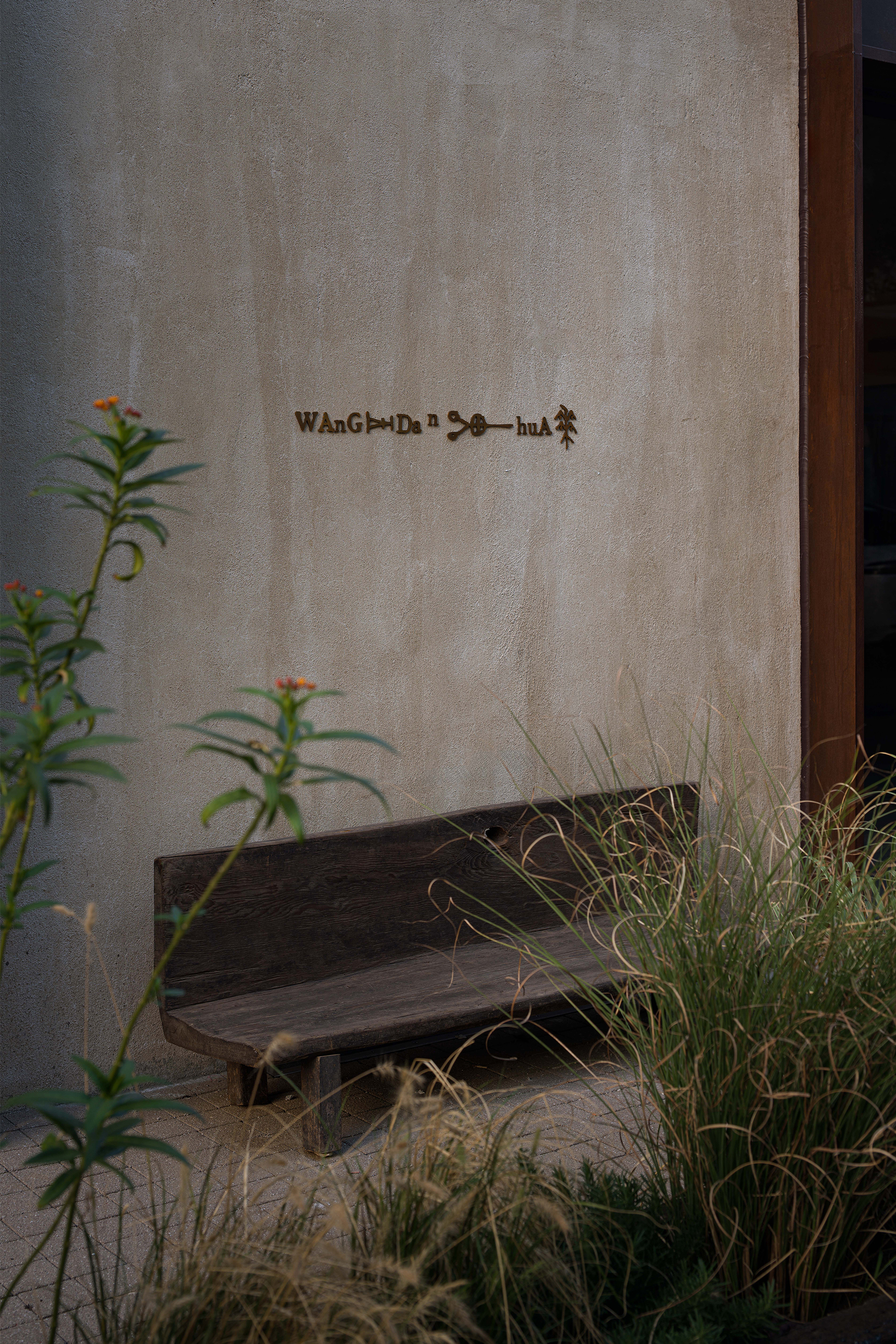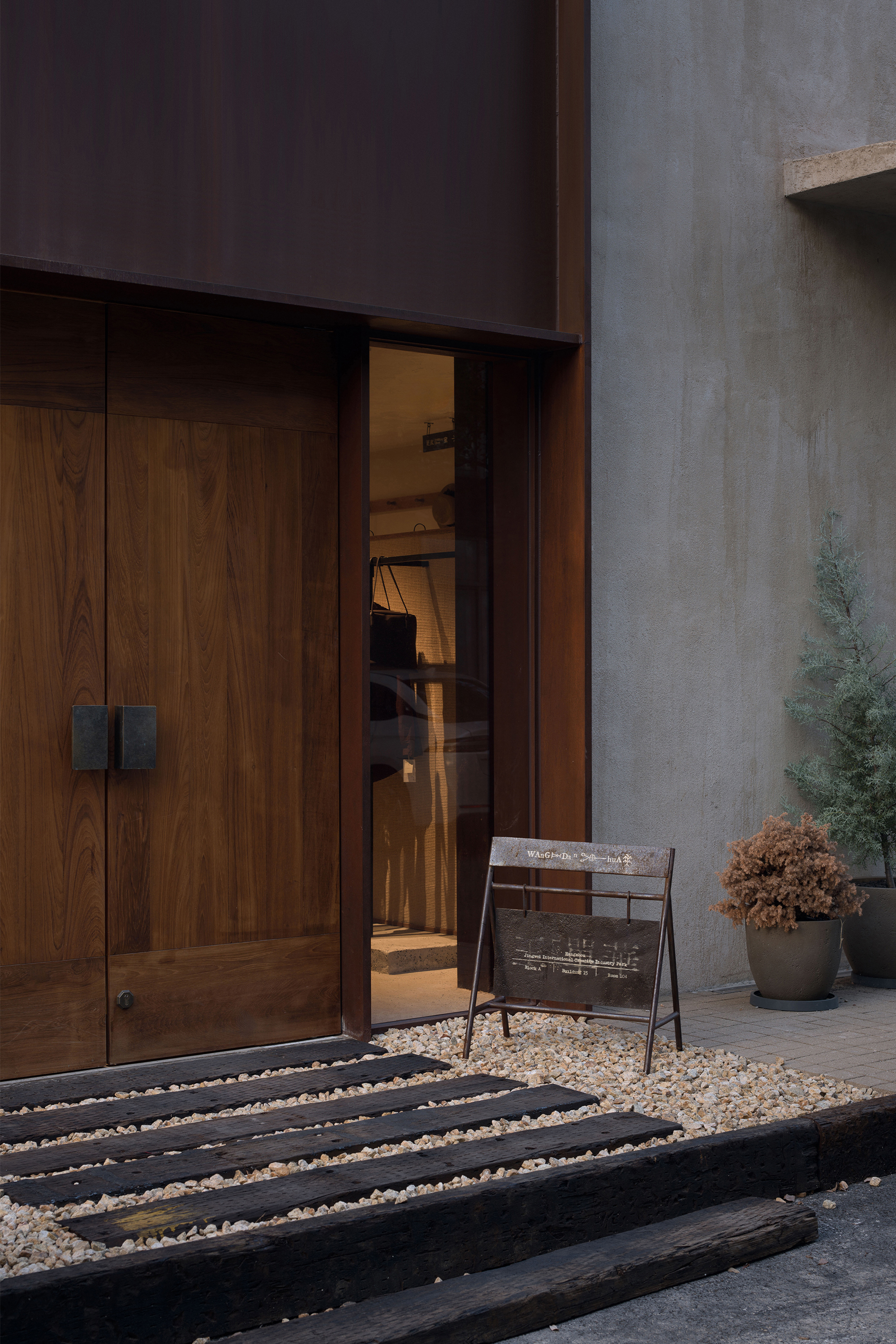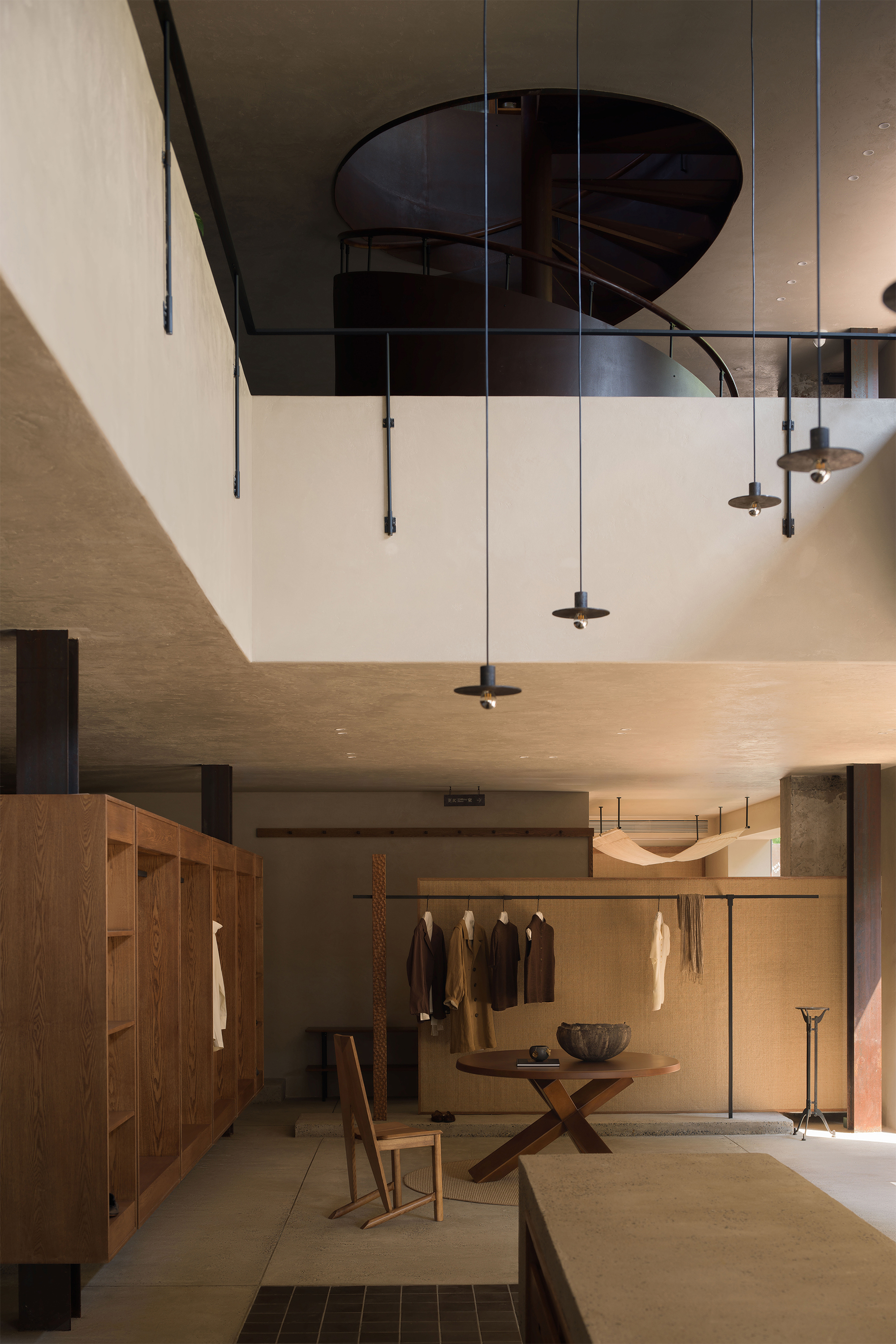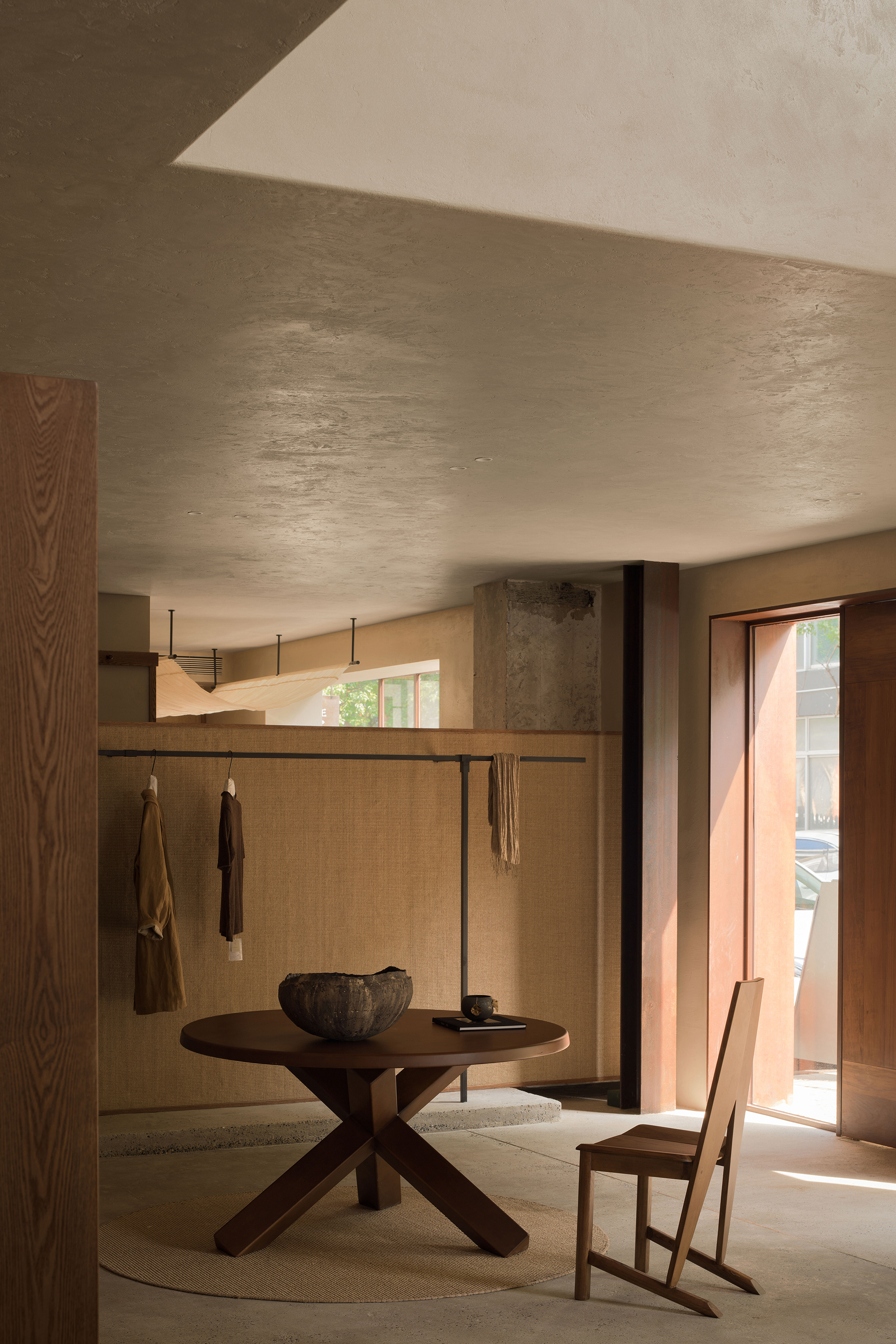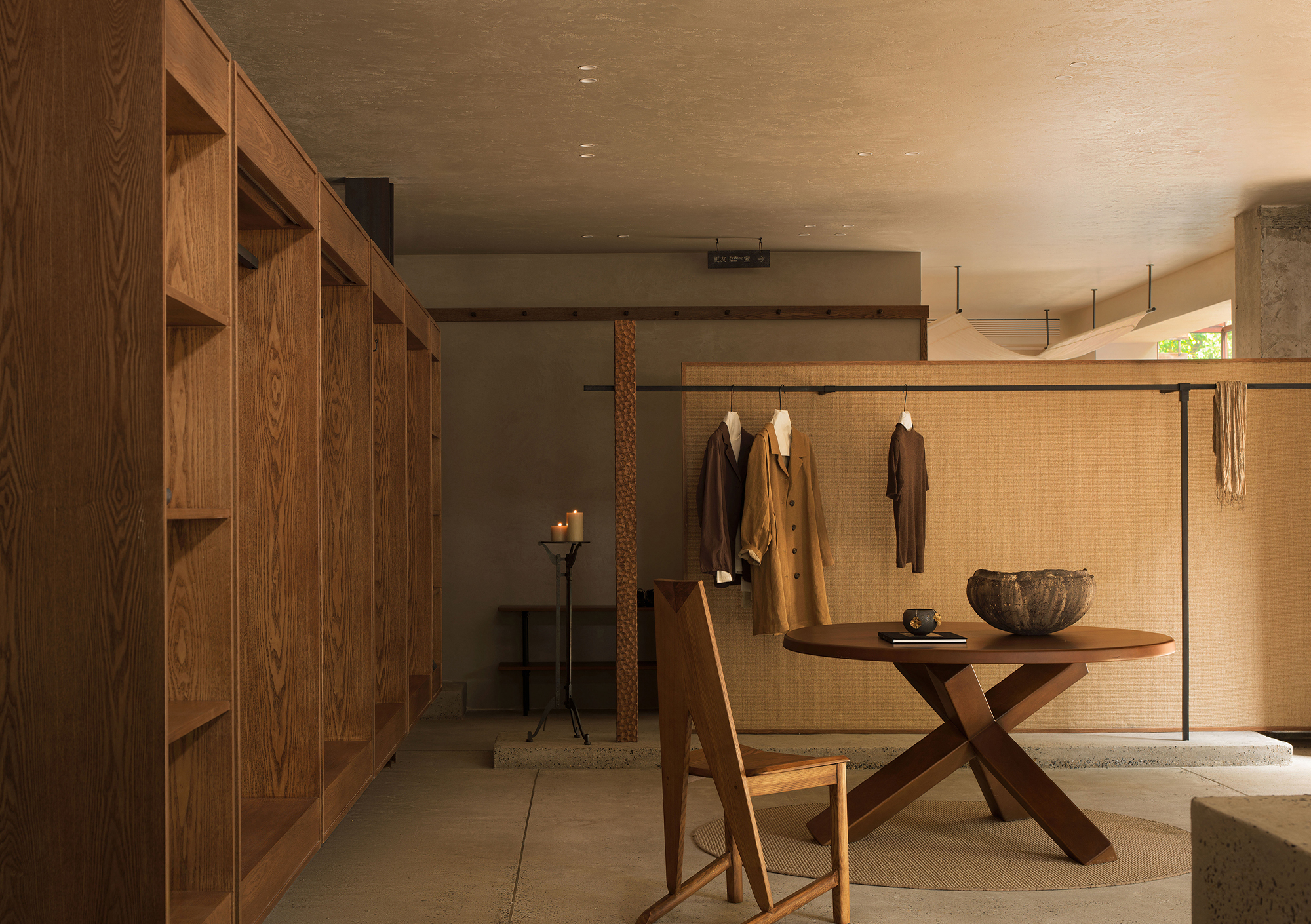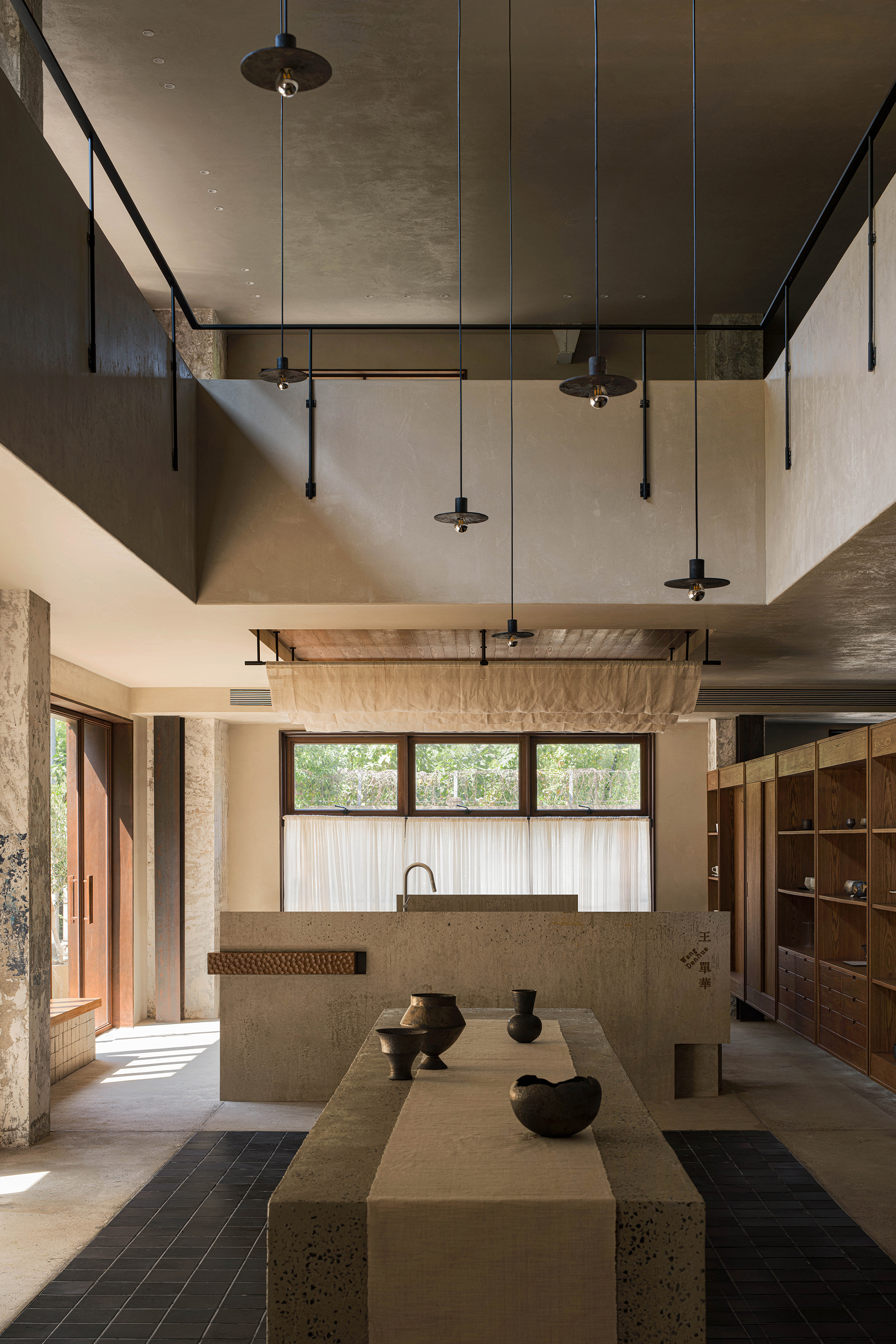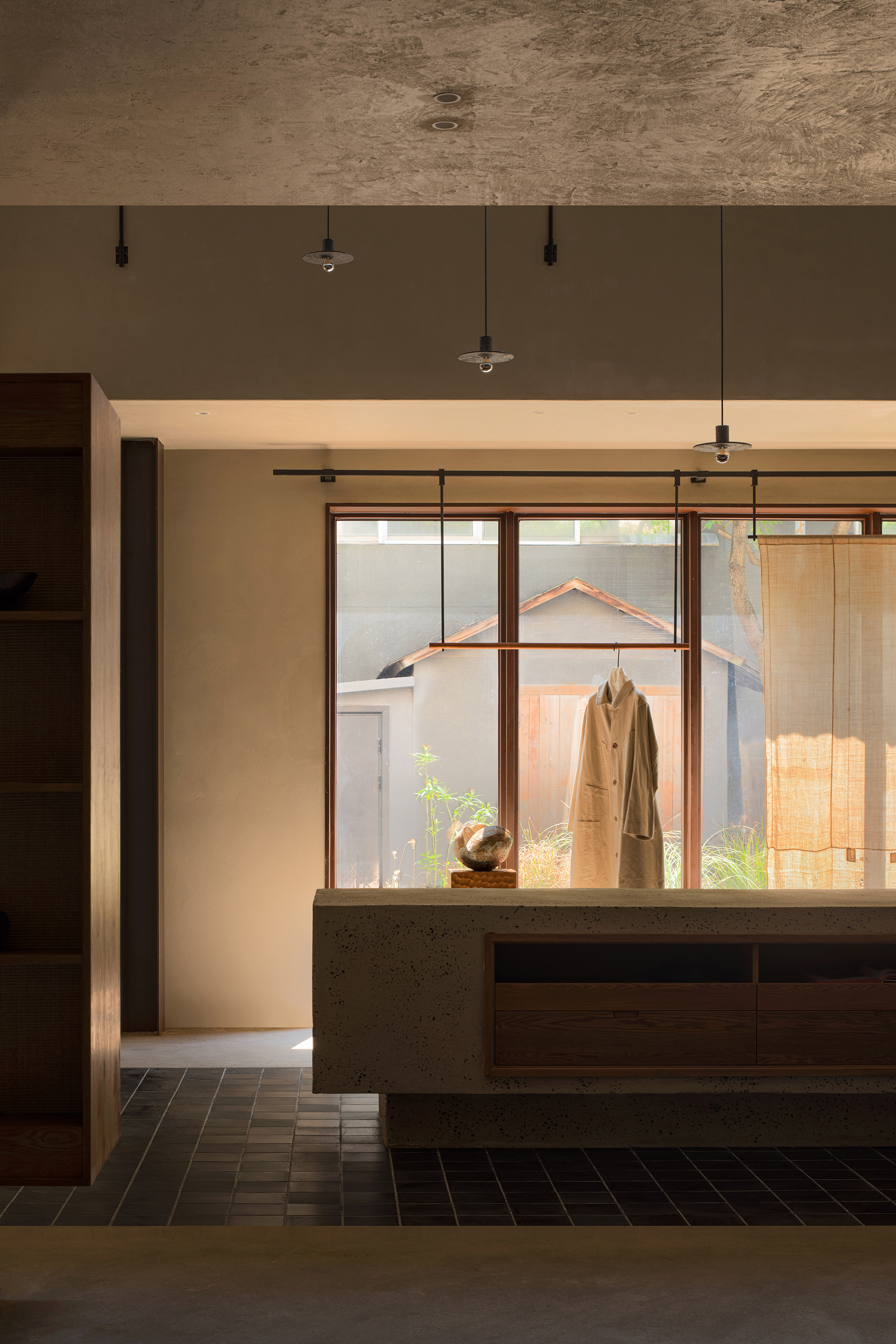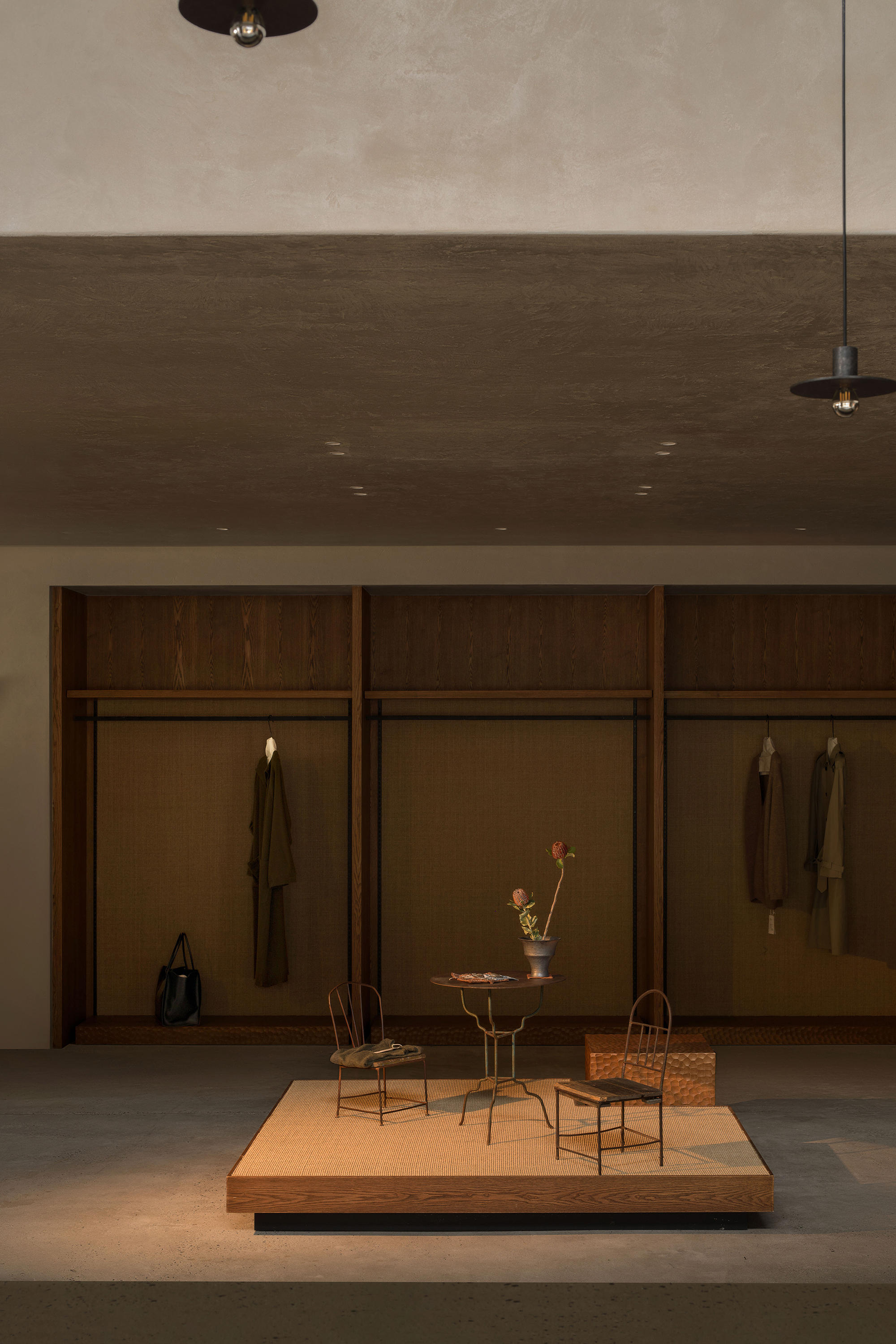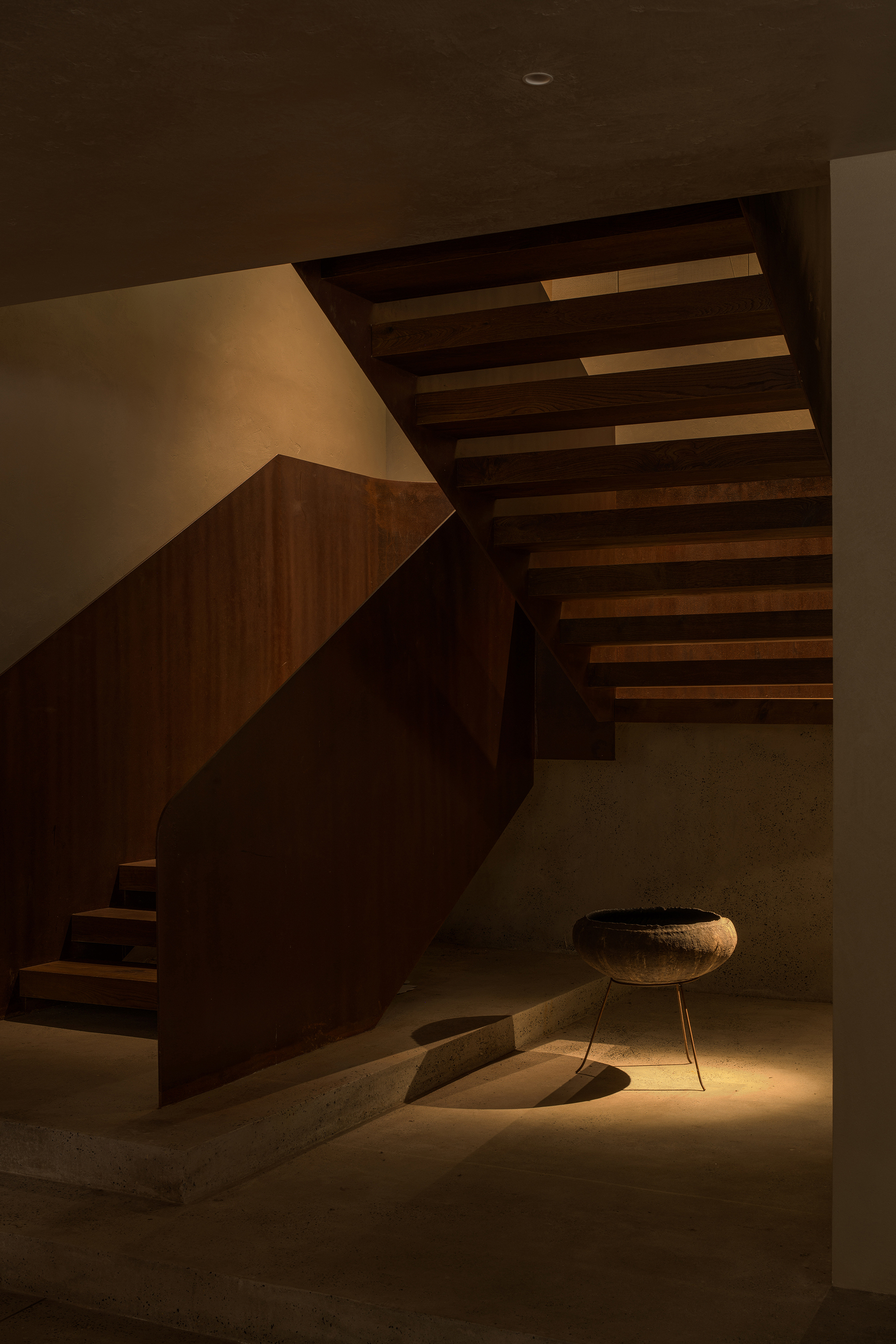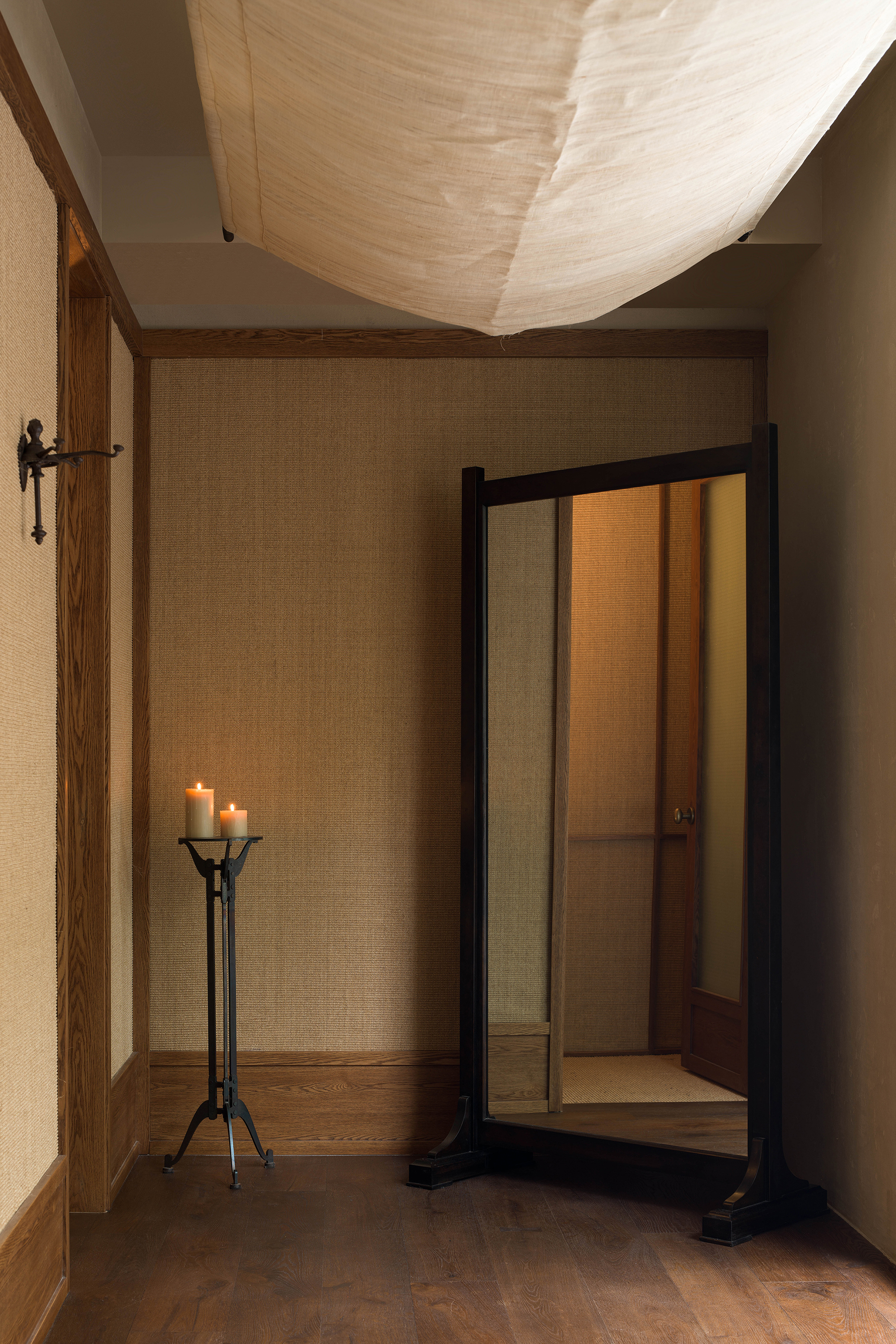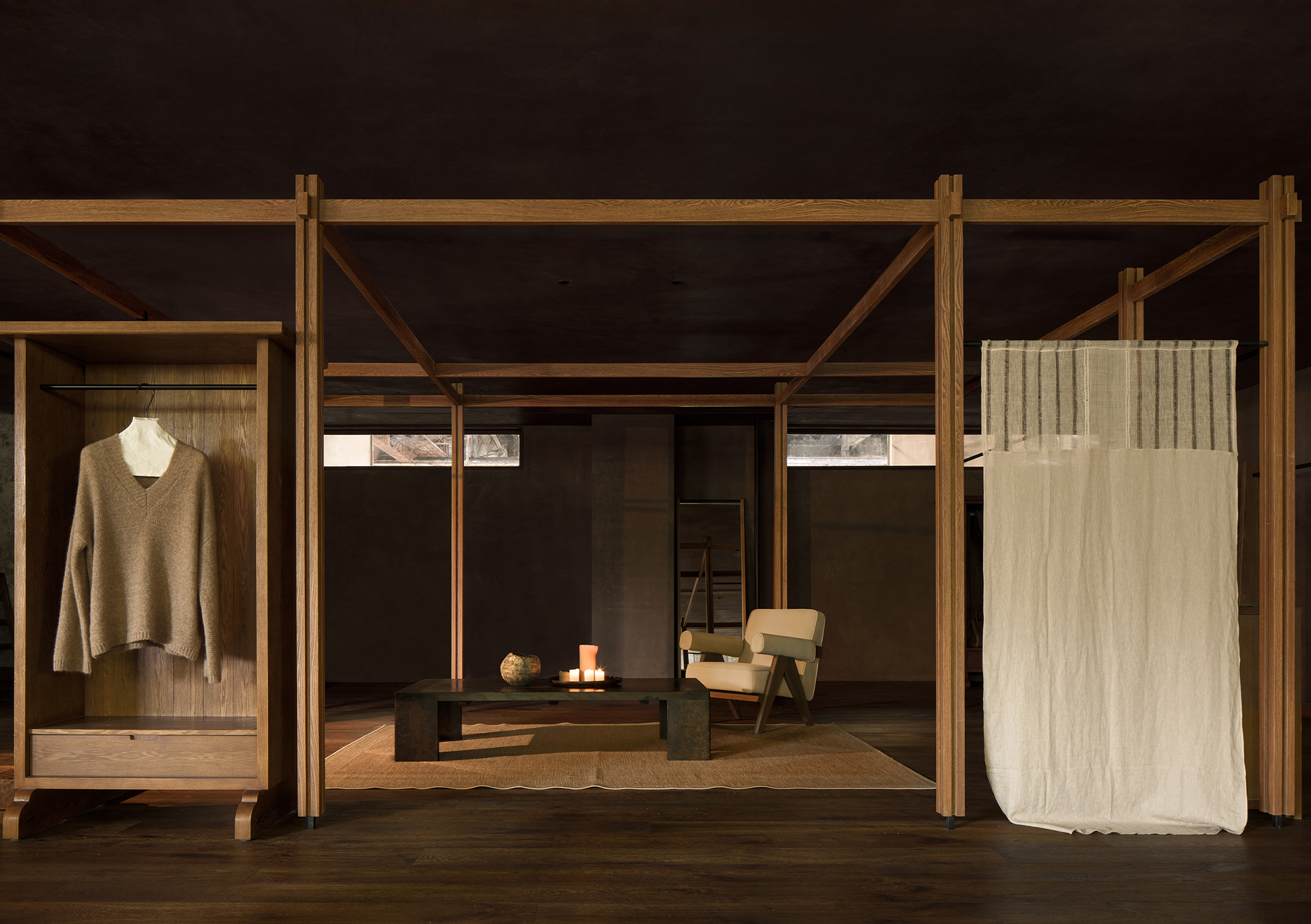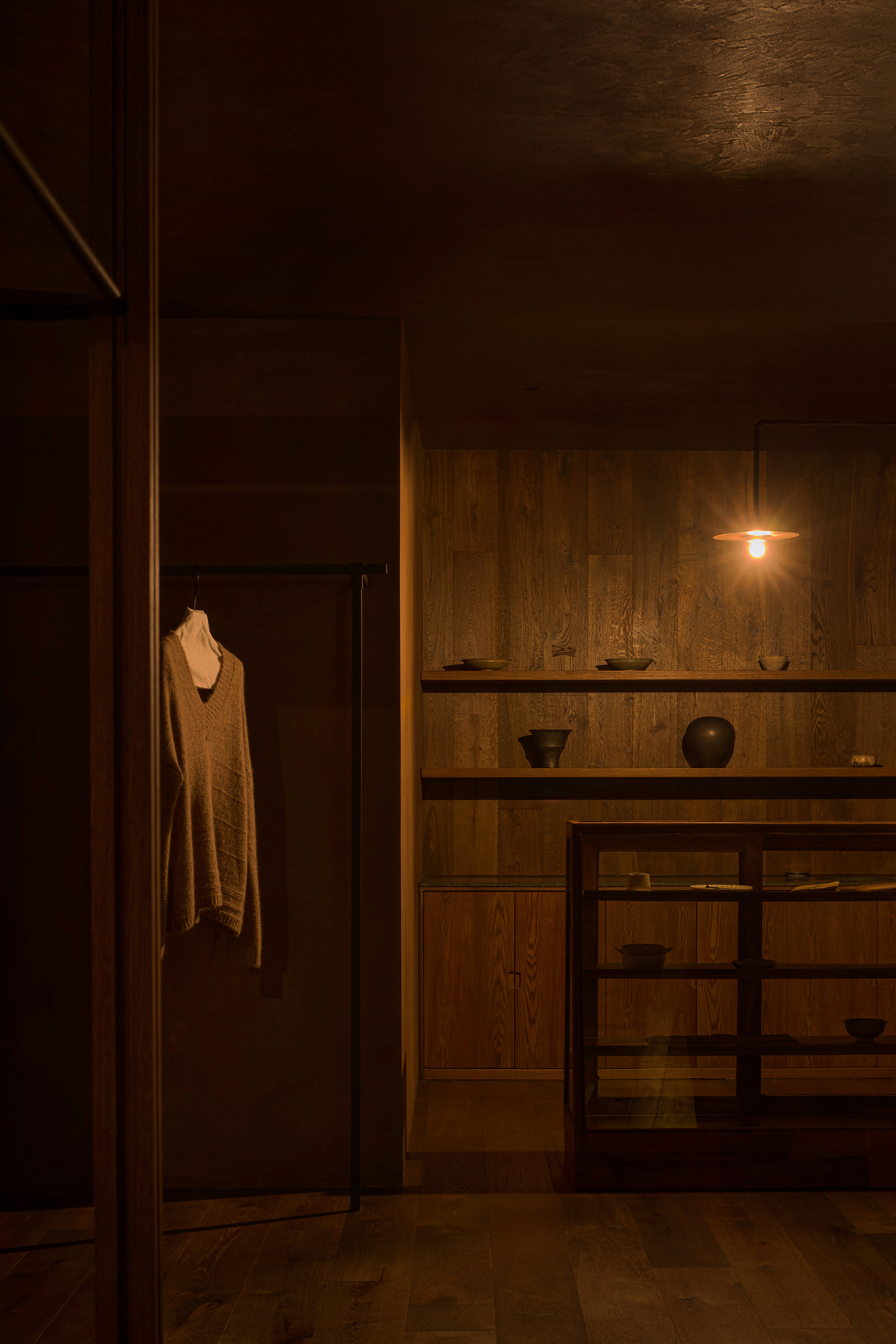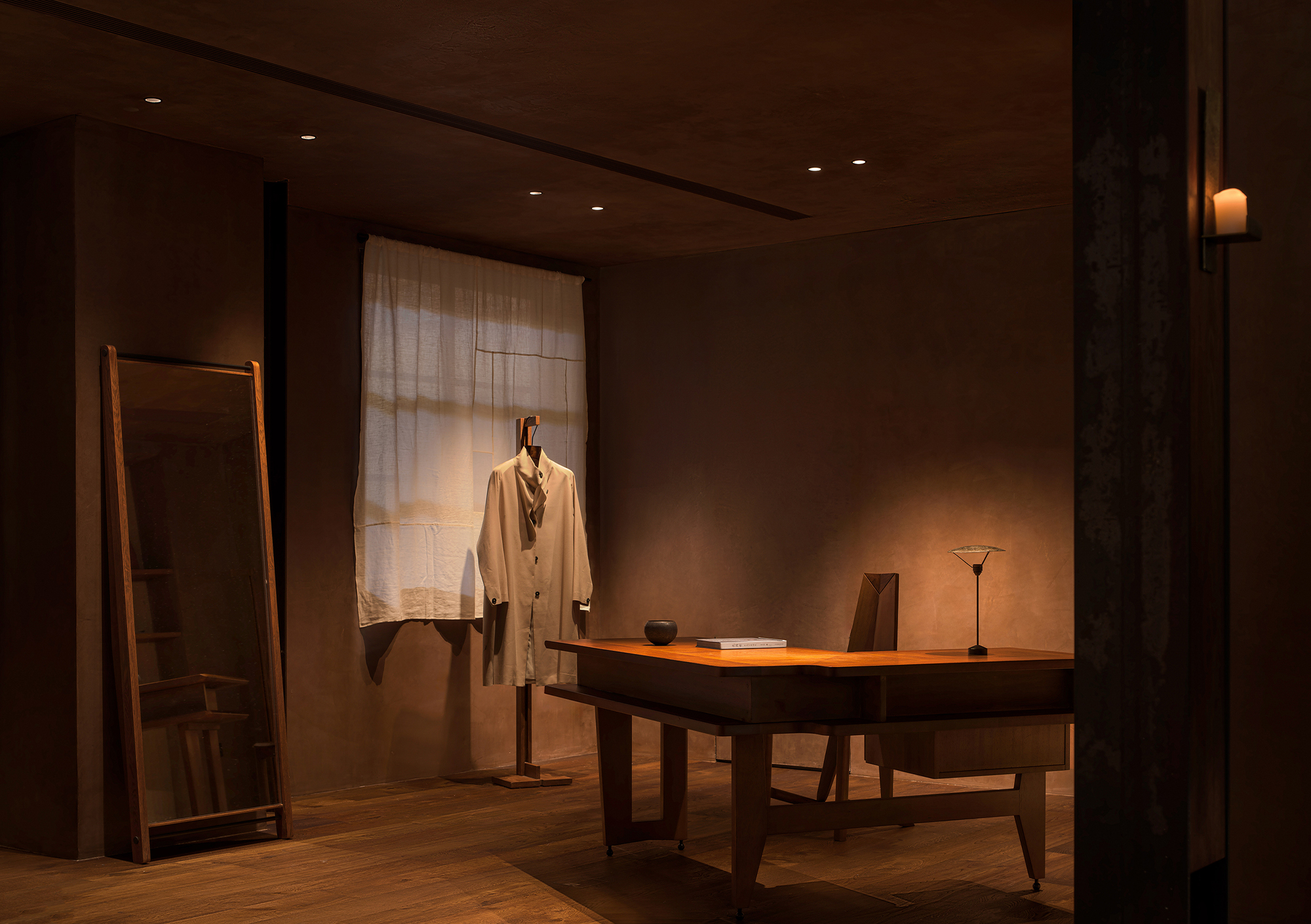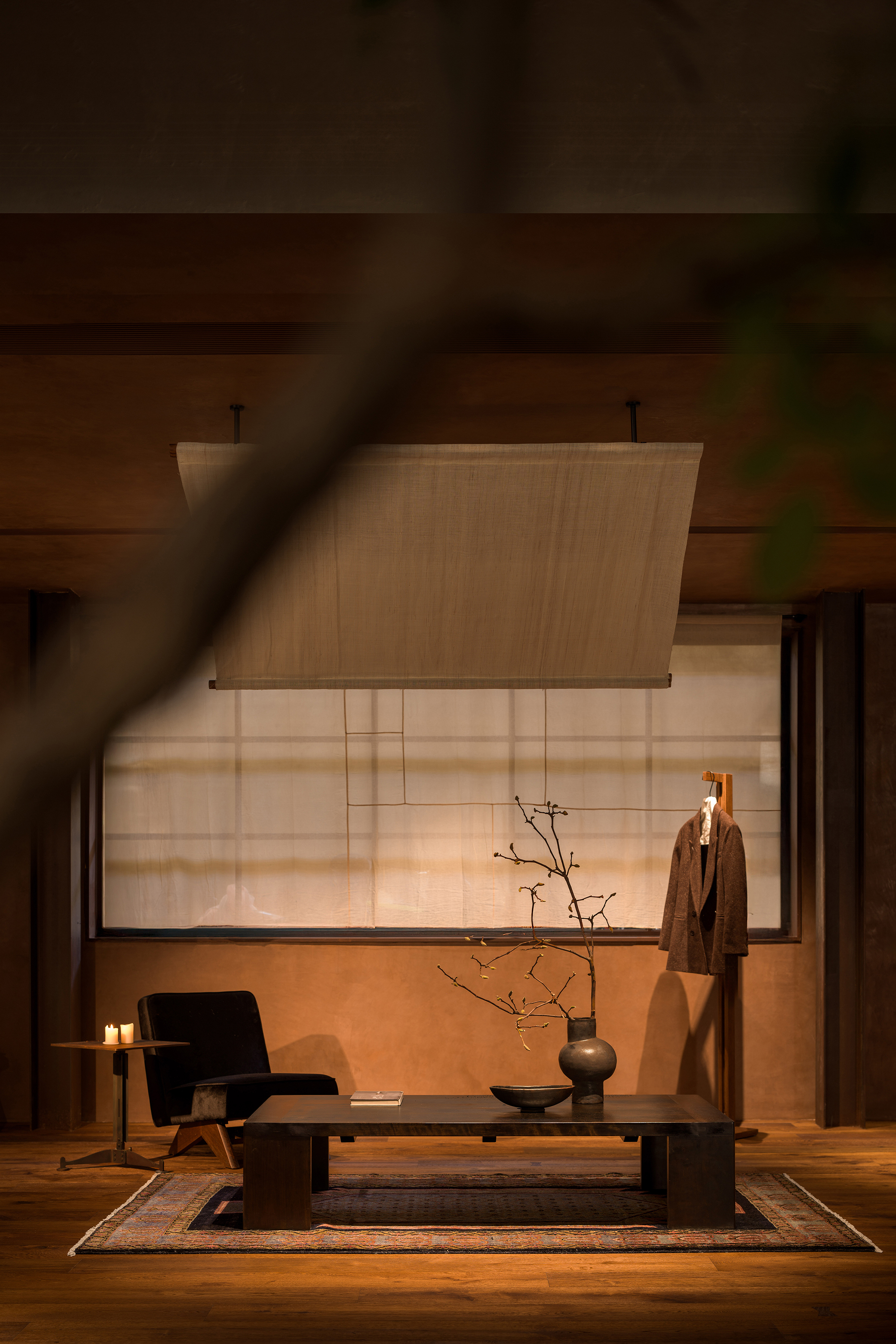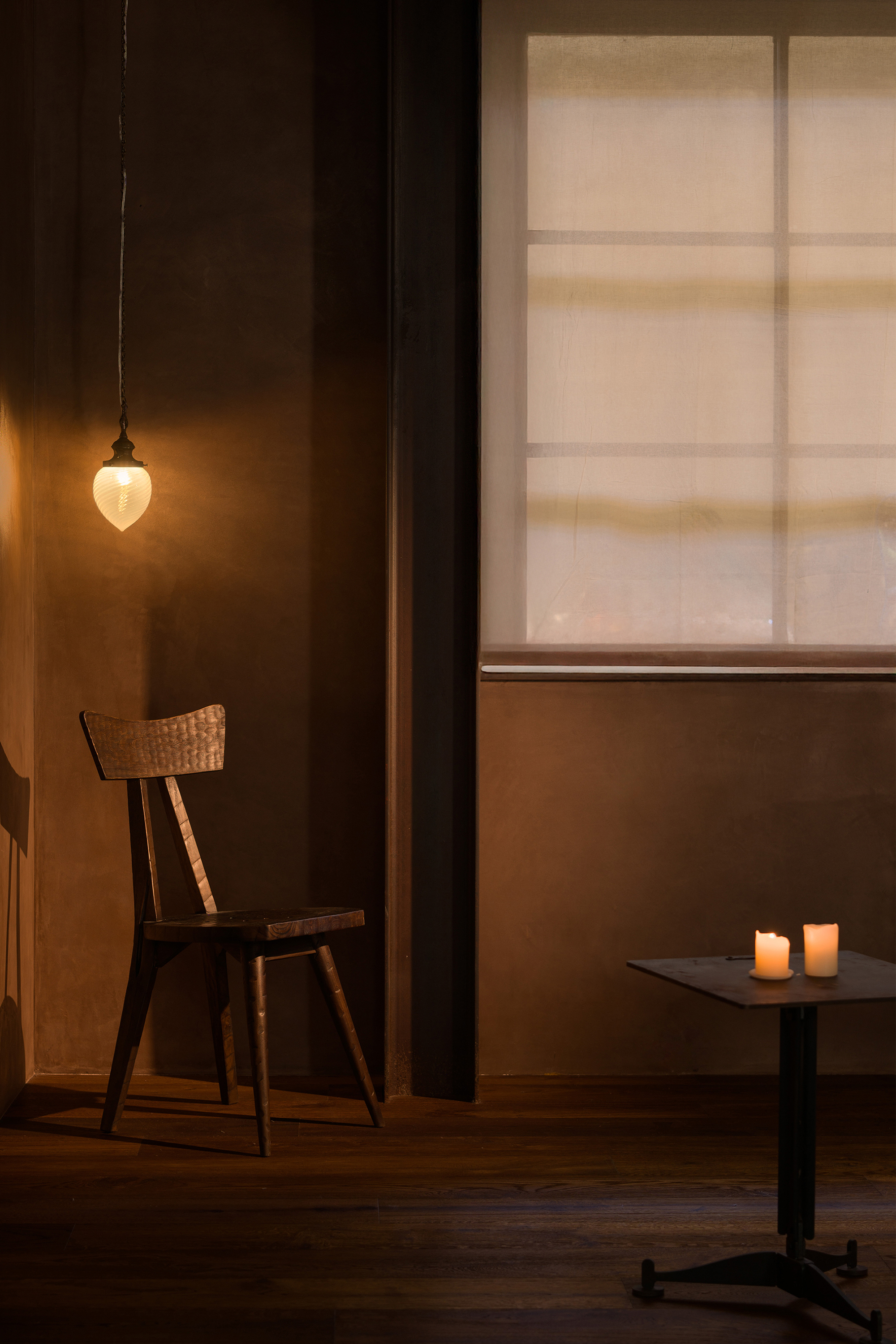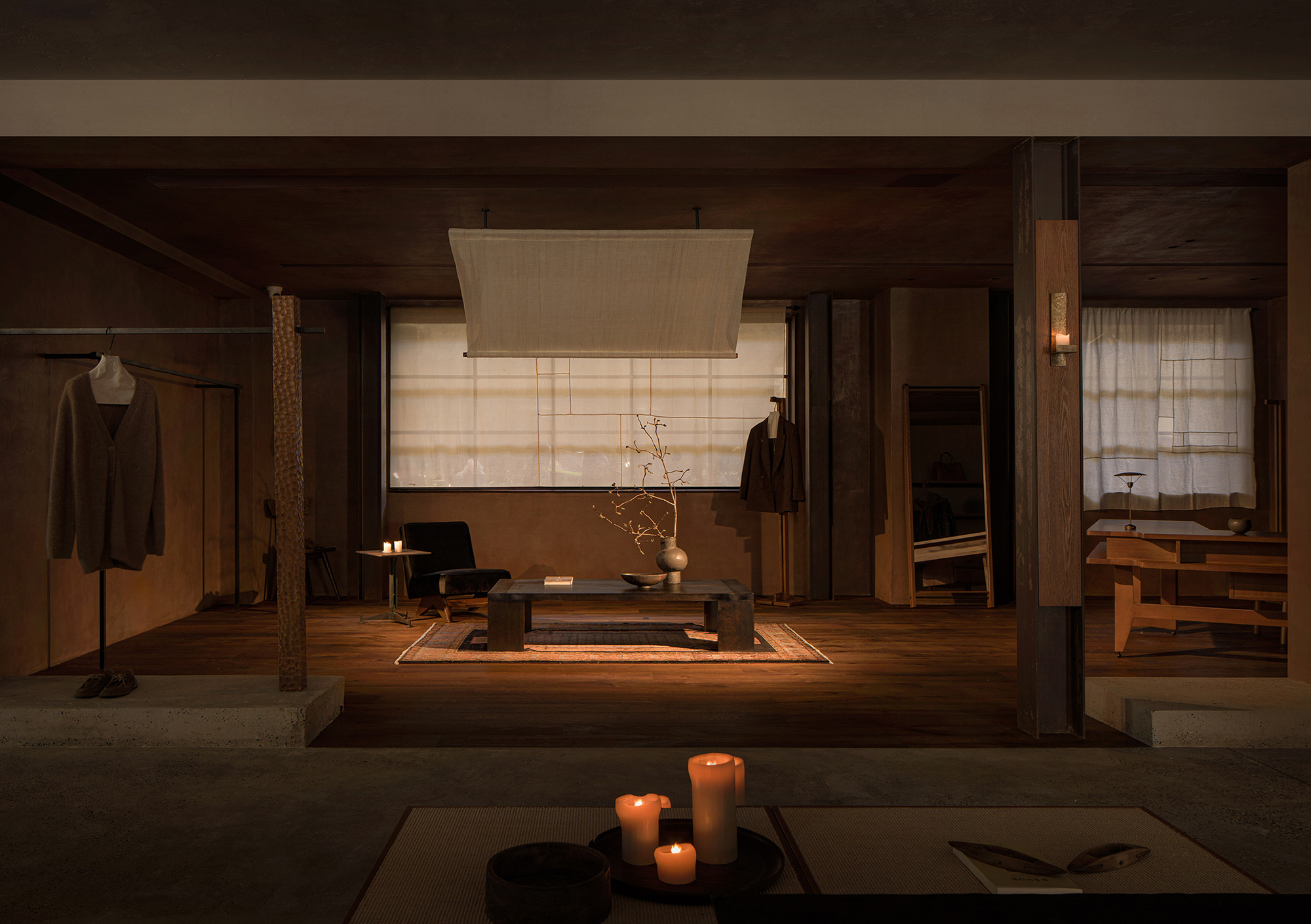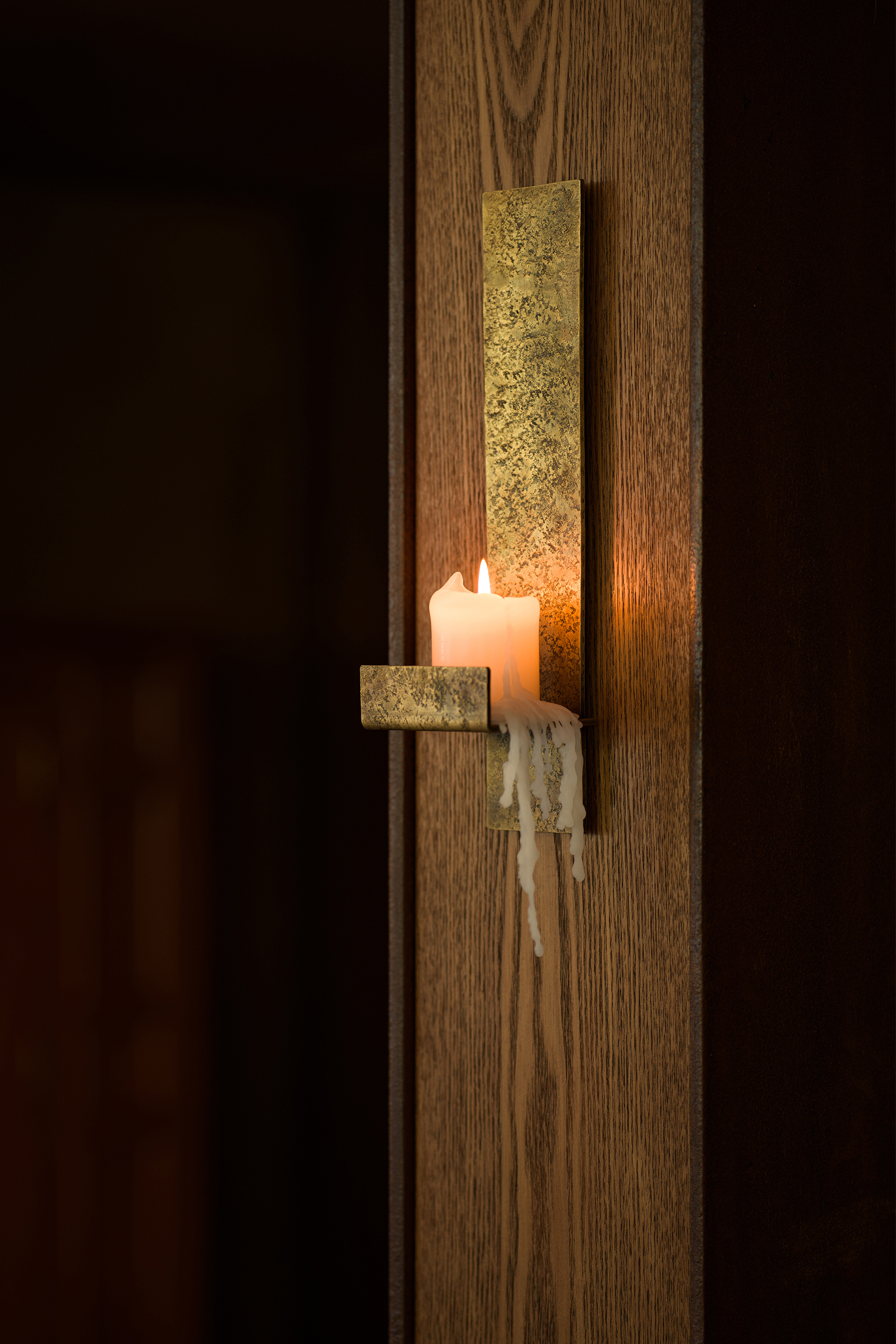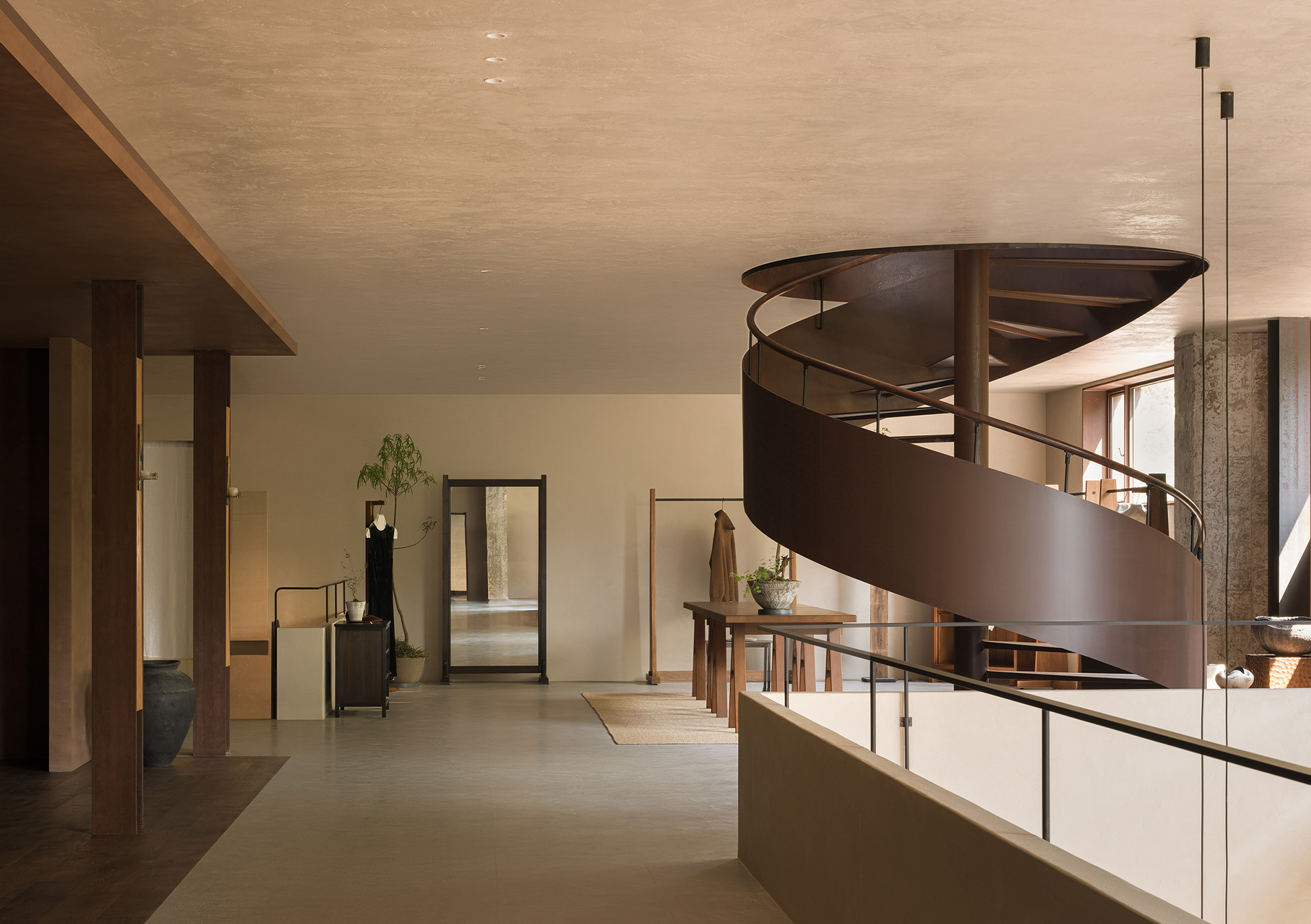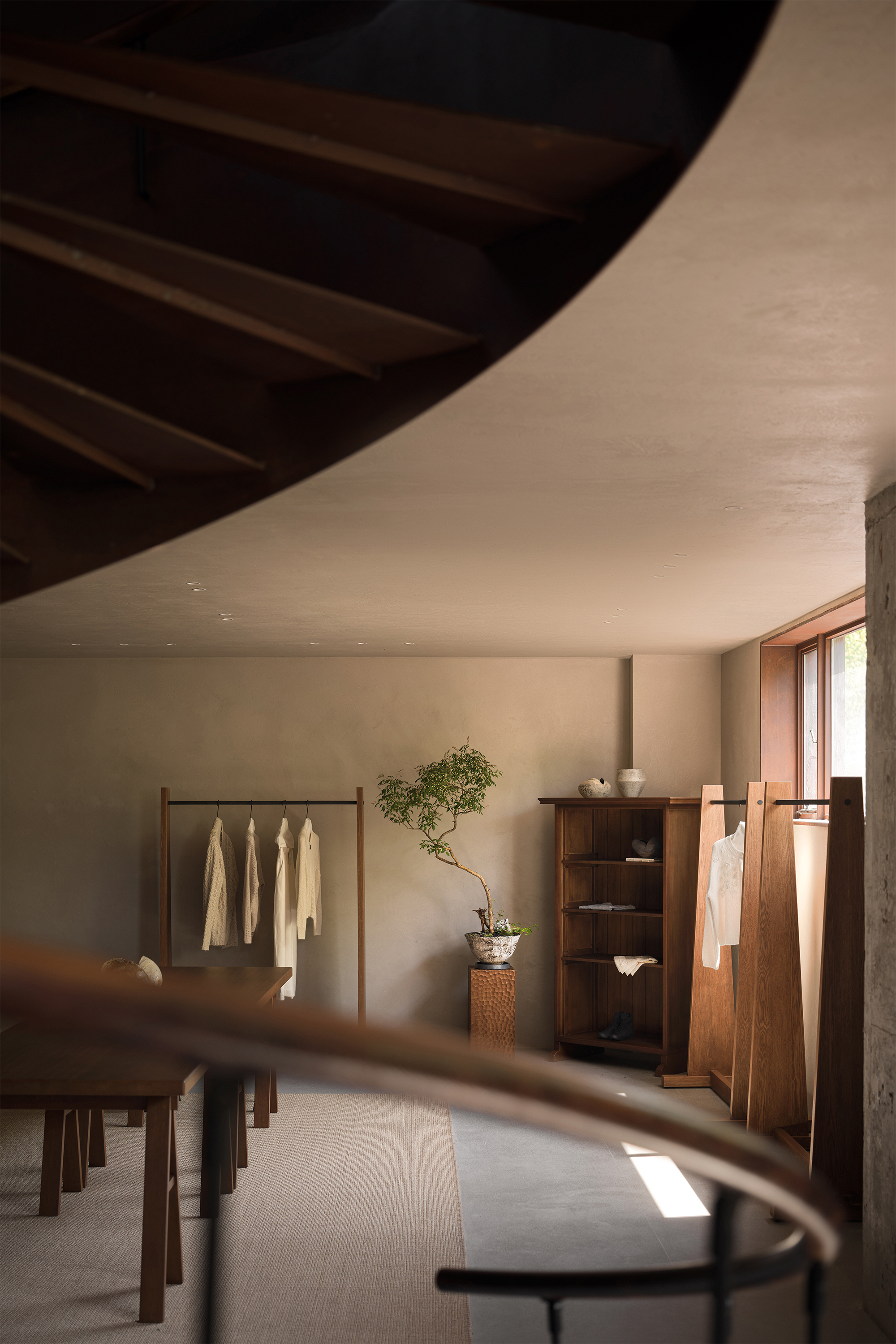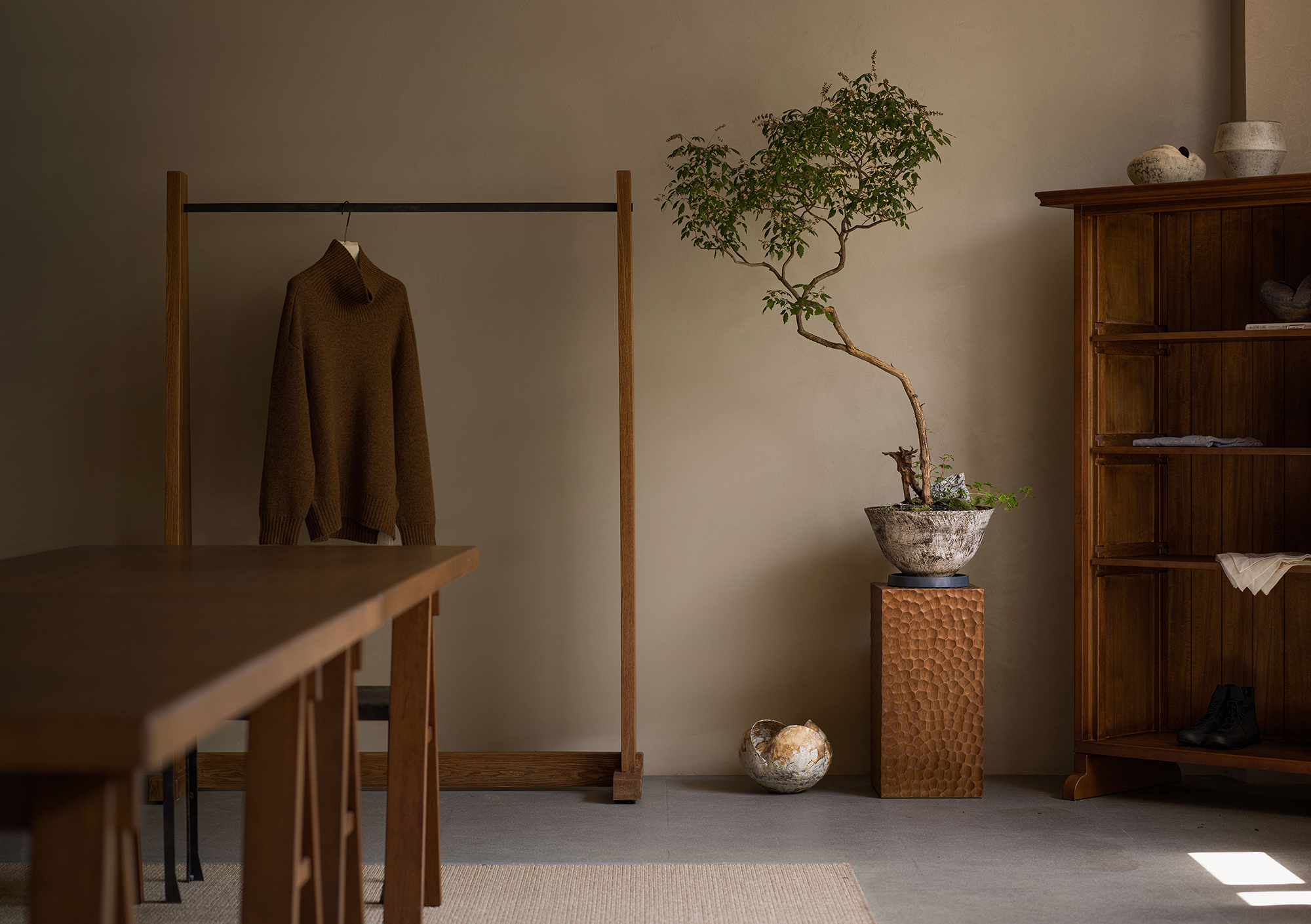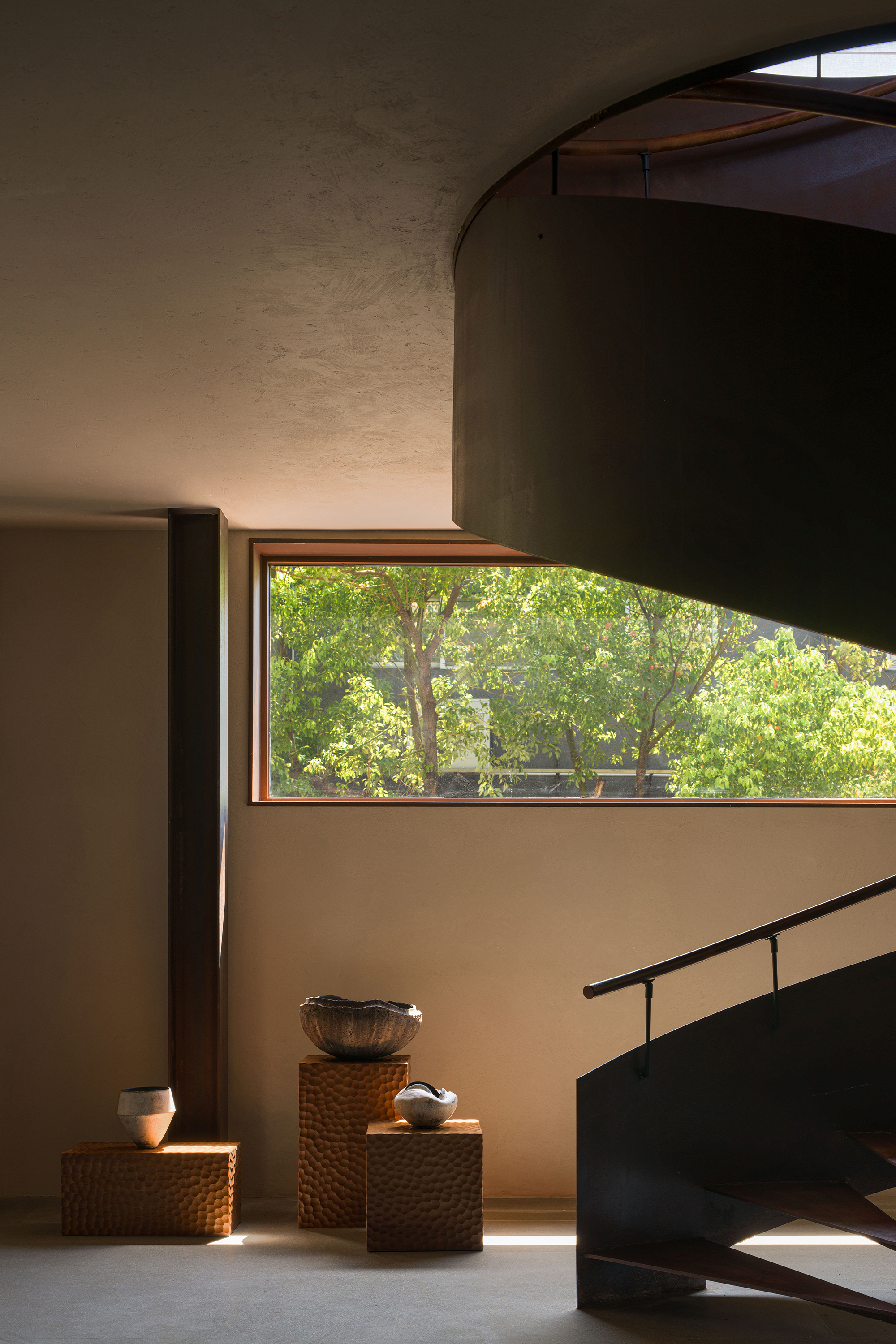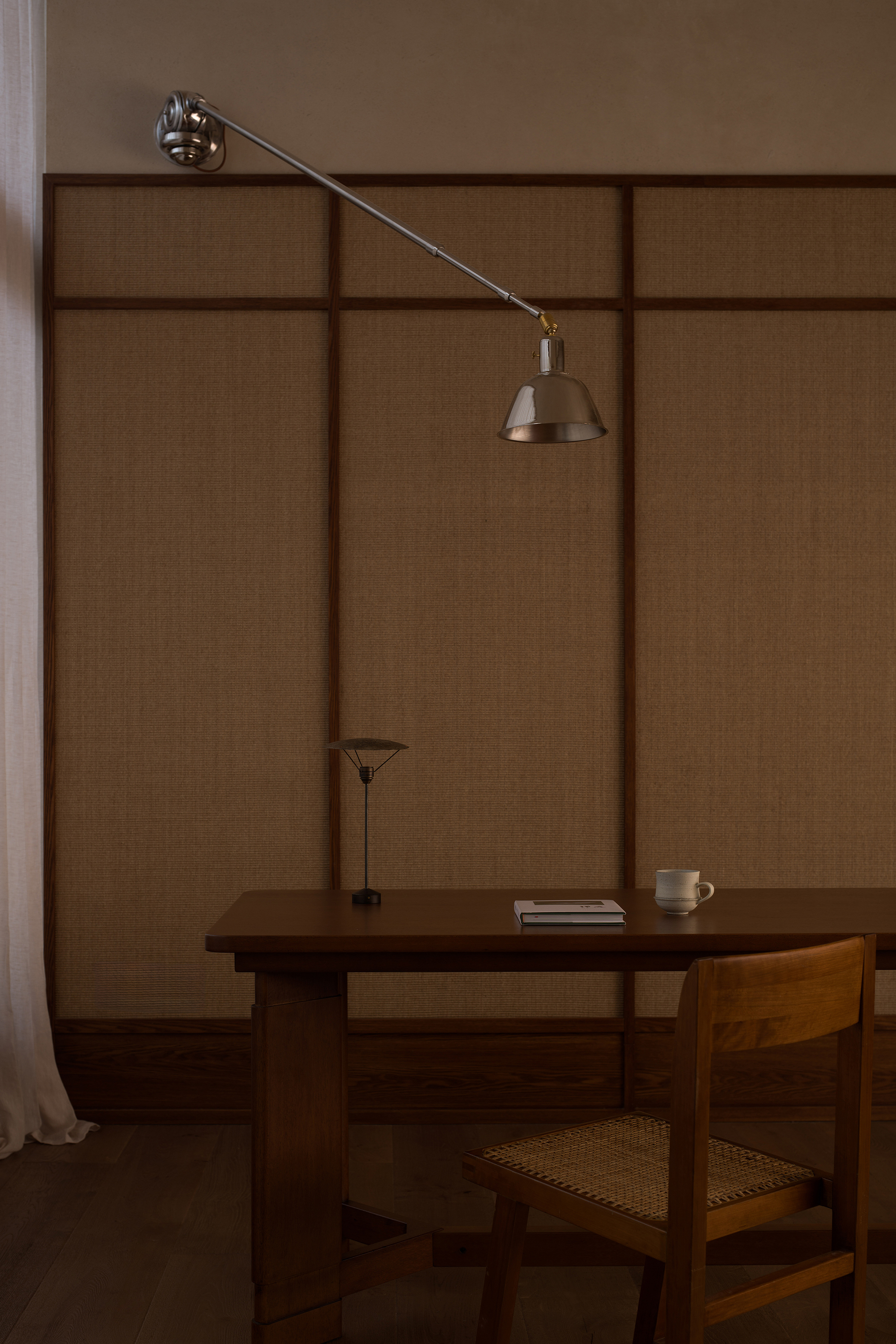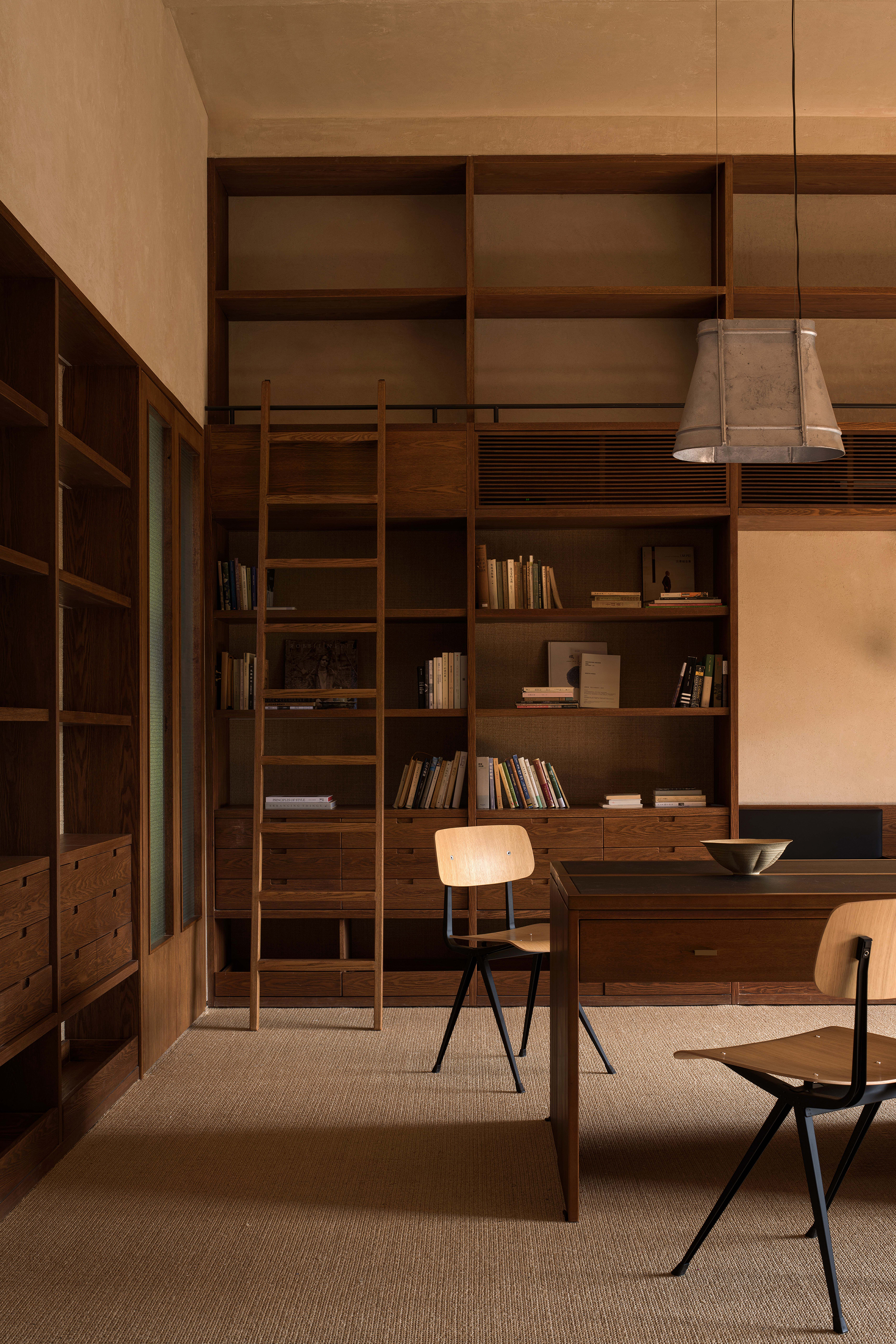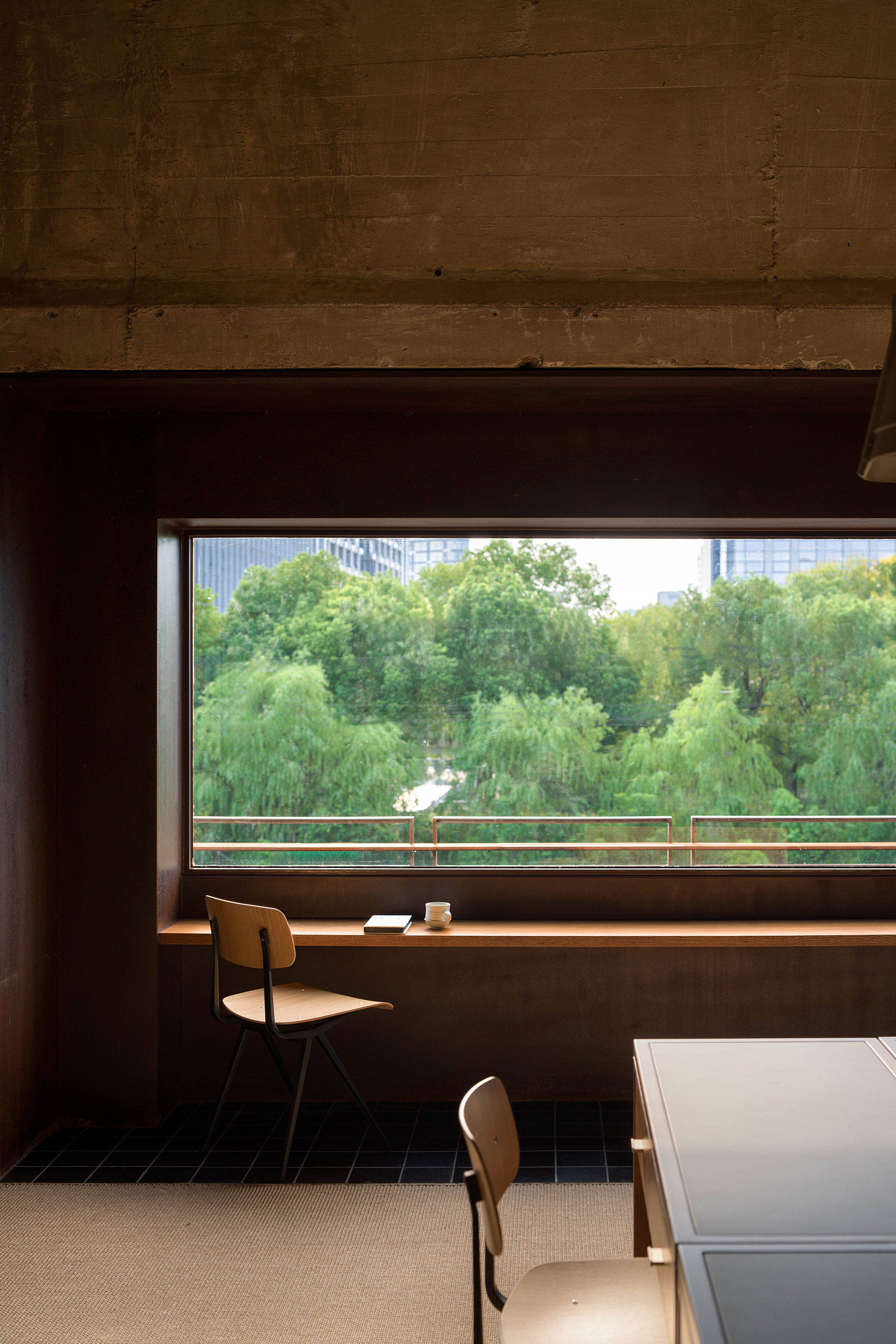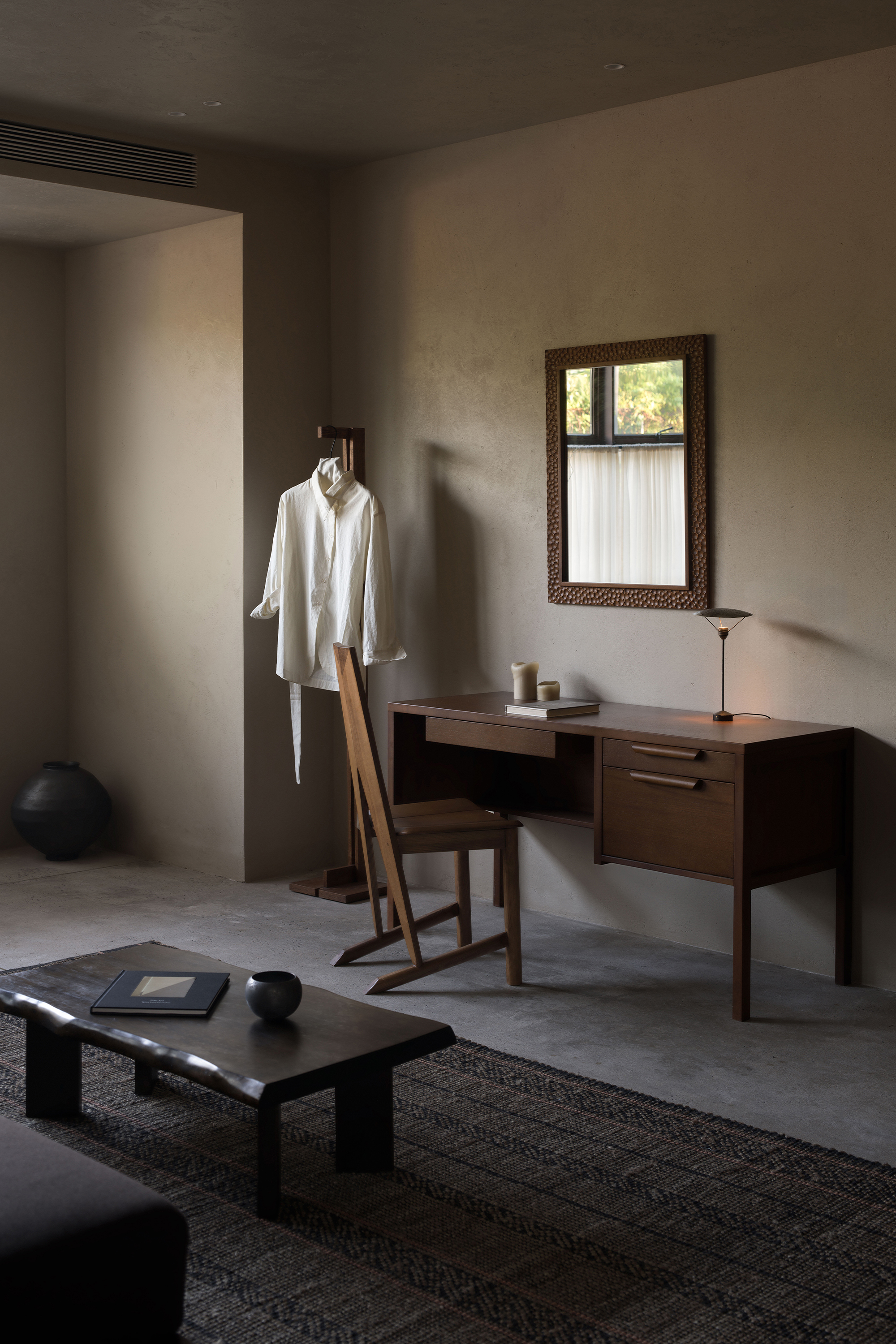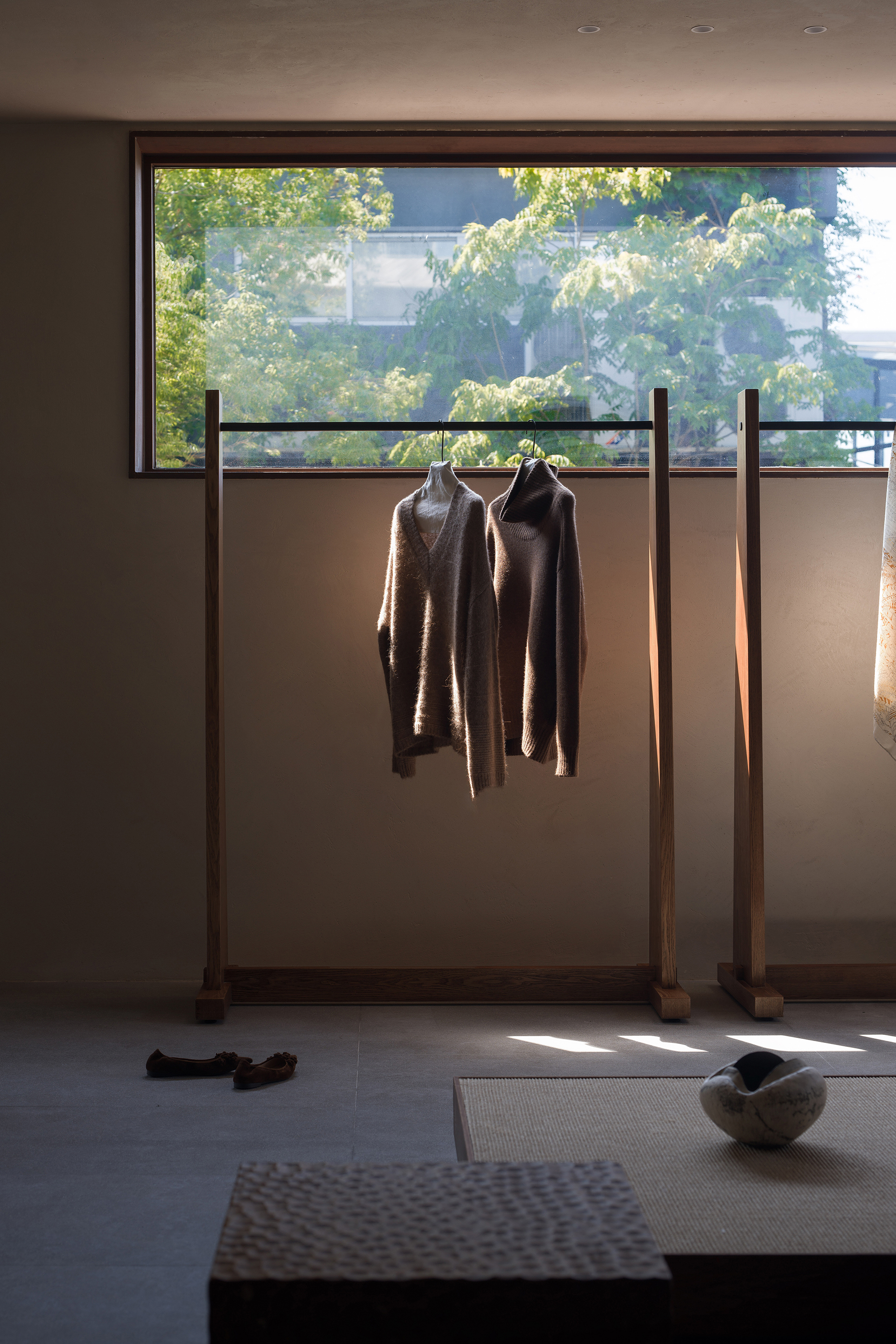The predecessor of Jingwei Tiandi Creative Park was Hangzhou Textile Factory, which was once a unique memory of the urban light industry era. With the development of the times and the relocation of textile factories, the industrial mission of this land came to an end, but it also injected new cultural possibilities into it. Starting from this, MARCH SPACE STUDIO not only preserves the original texture of the building, but also implants a warm, relaxed, and homely spatial language to create a long-term space that combines historical significance and living temperature - Wang Danhua Clothing Collection Store.
In order to continue the vitality of the old factory area of Jingwei, we adopt the strategy of "respecting relics and local regeneration" to achieve a historical dialogue between the new space and the old factory building. The storefront is made of red rust colored metal plates, with a rusted texture that resembles the traces left by time. It retains the rough texture of the industrial factory area and echoes the characteristics of the site with modern materials. MARCH SPACE STUDIO always pays attention to the sustainability of architecture and advocates for the long-term environmentally friendly use of building materials. This concept is also reflected in the detailed design - the wooden fence in front of the store is transformed from the former train sleepers. The uneven patterns on the sleepers and the warm texture polished by time allow every person who steps into the store to touch the traces of history.
During the renovation process, we retained the cement columns in the main structure. The columns have not been decorated, and the original cement texture contrasts with the laid artistic bricks and wooden veneers, allowing for the integration of industry and contemporary design, achieving a continuation of history, and giving the space a sense of time sedimentation.


